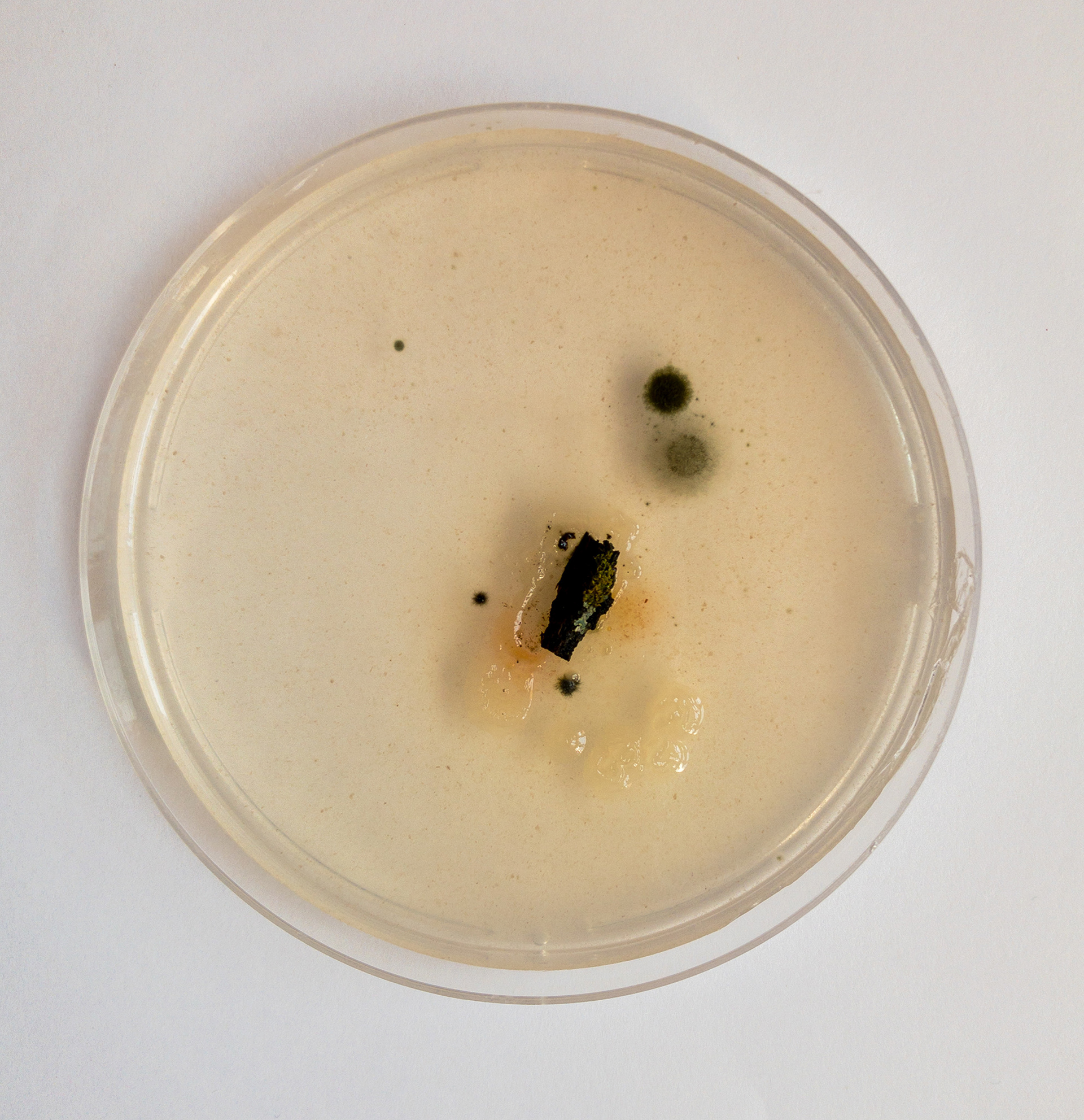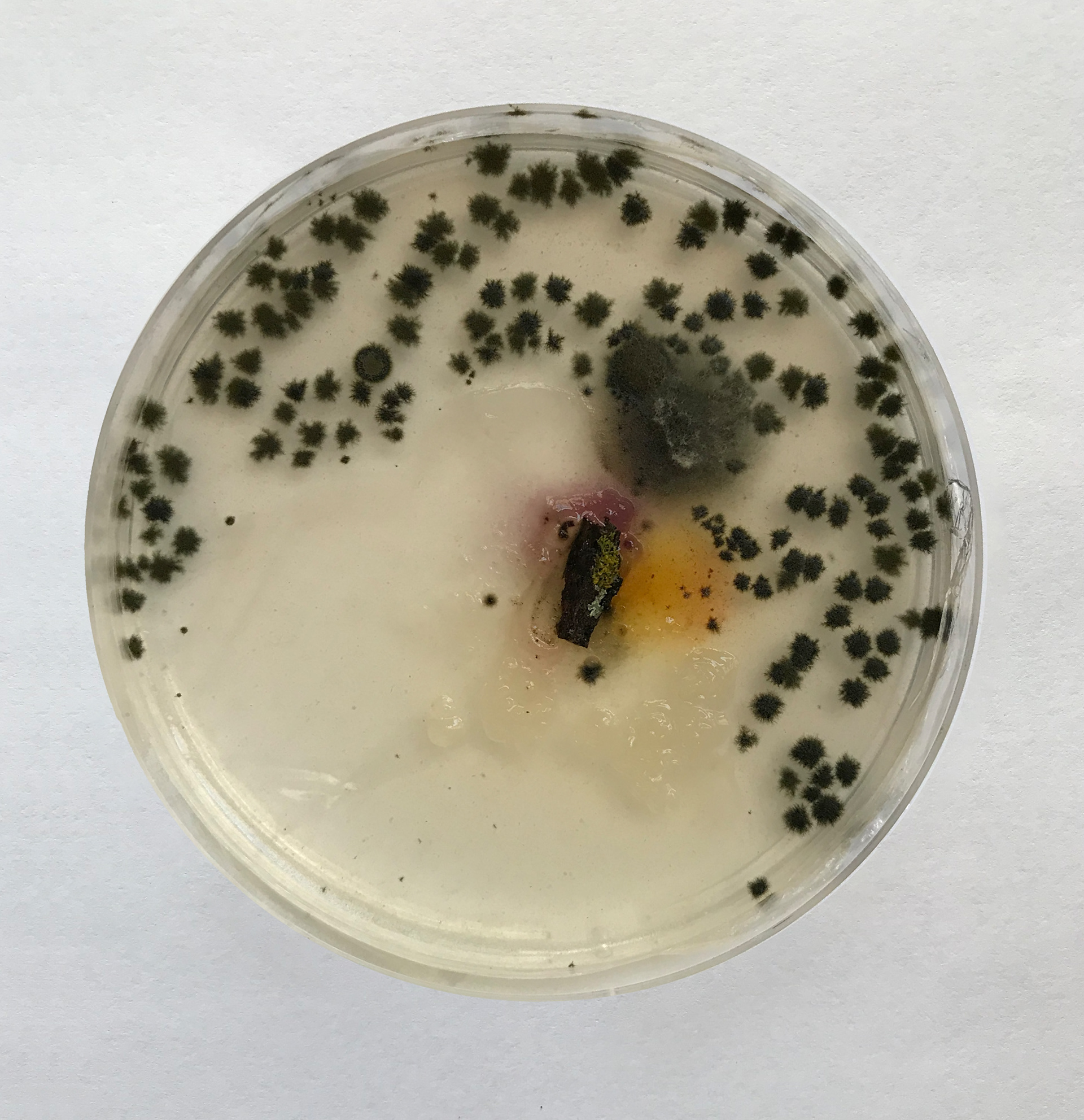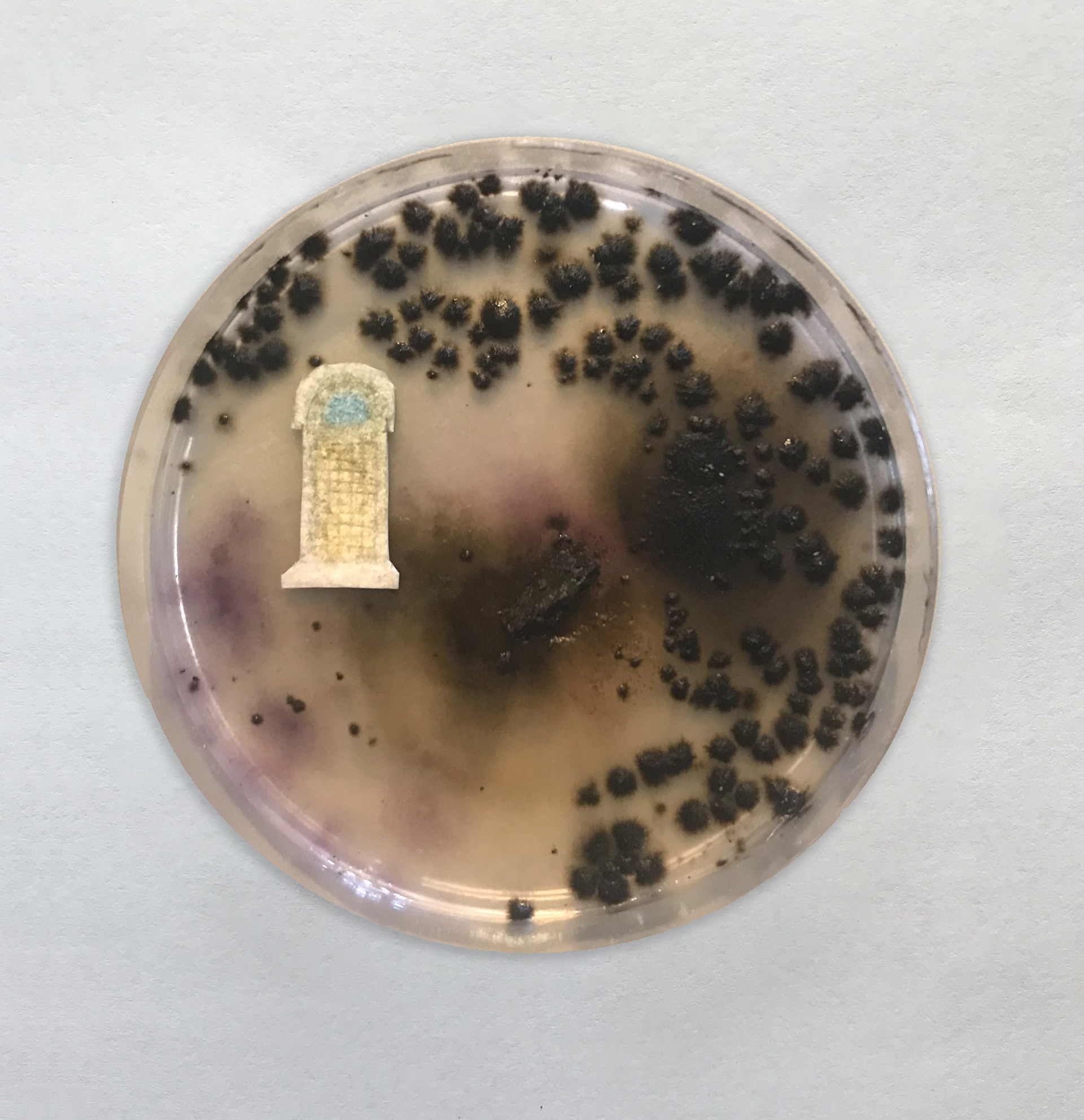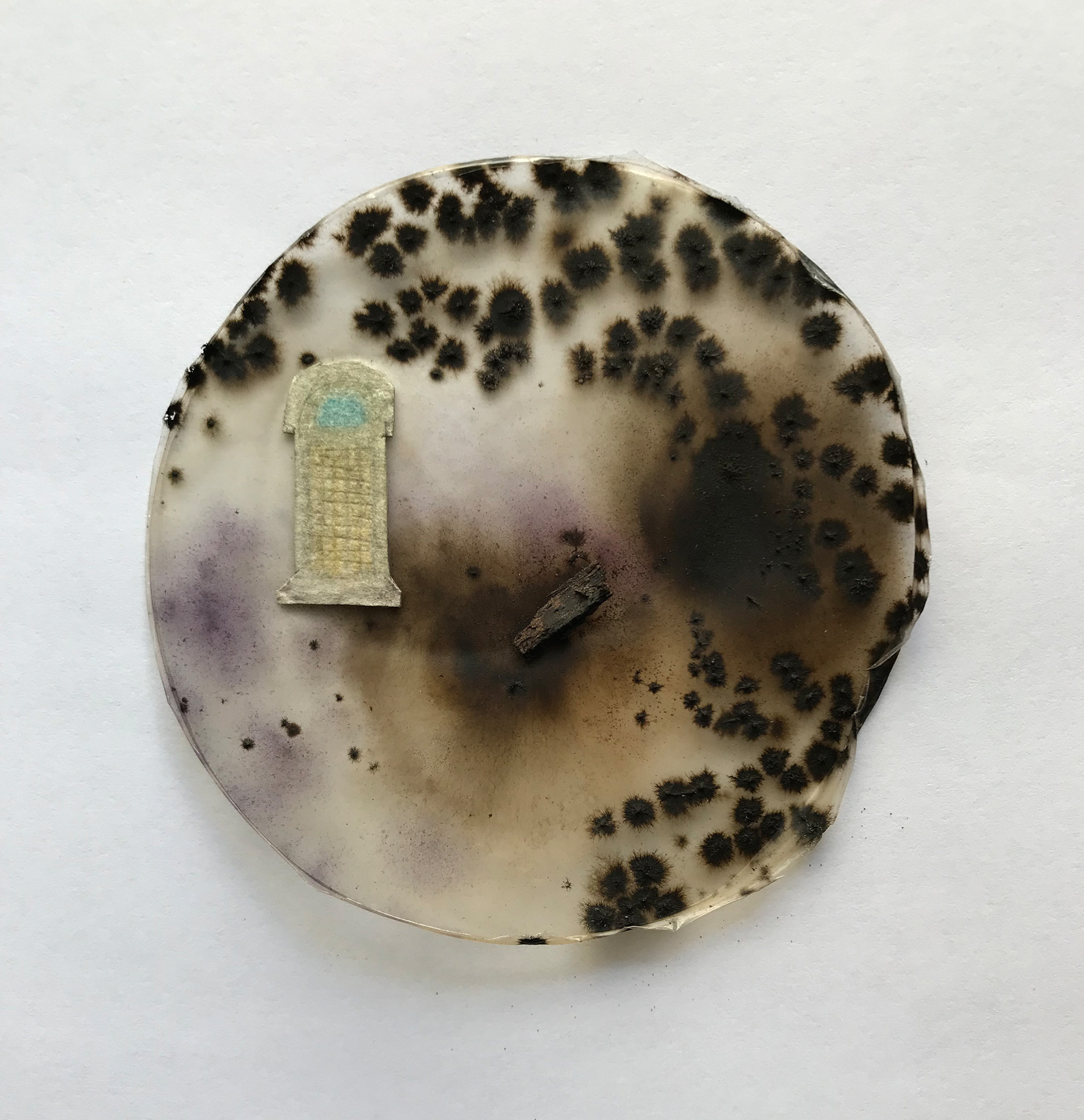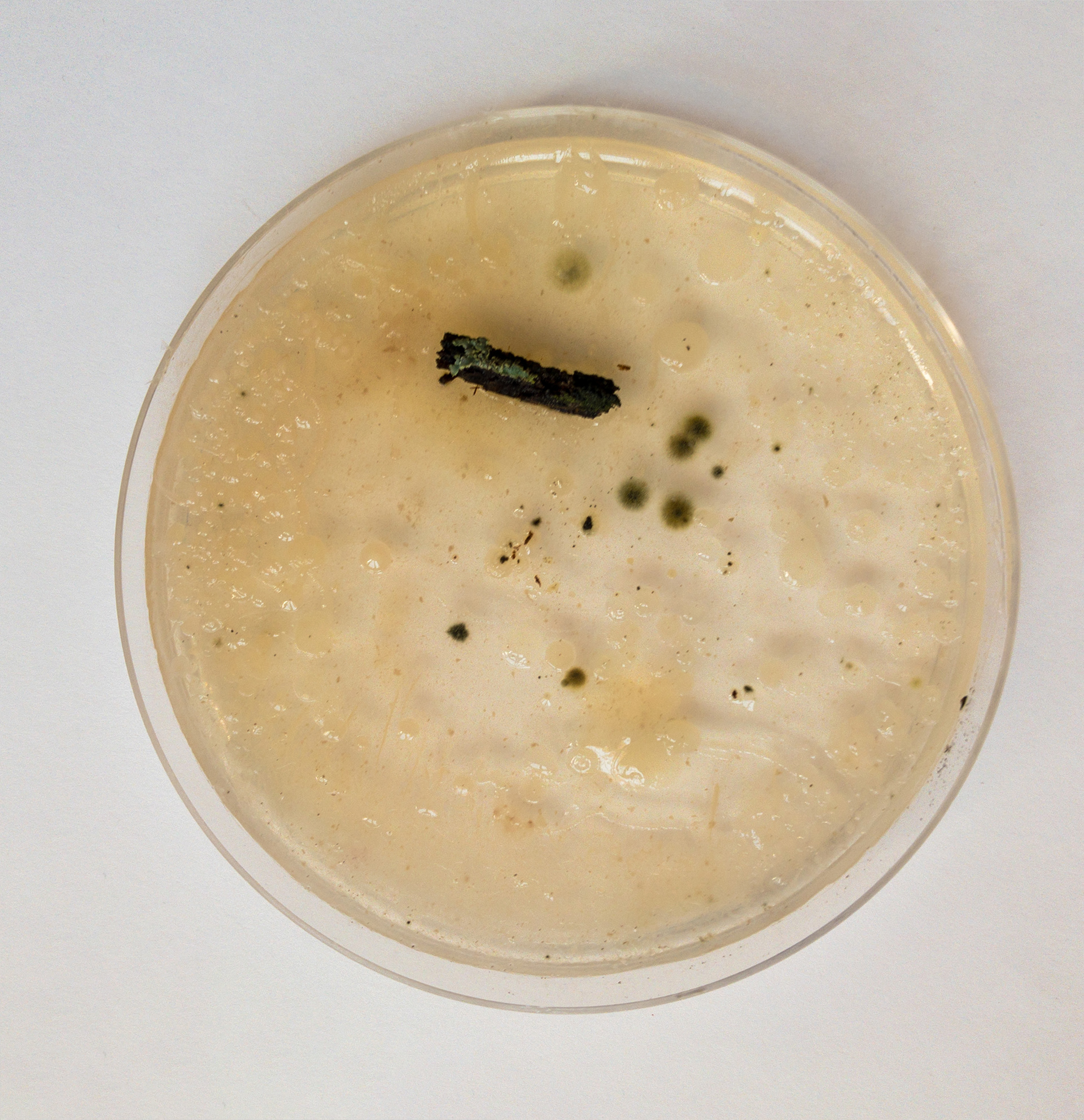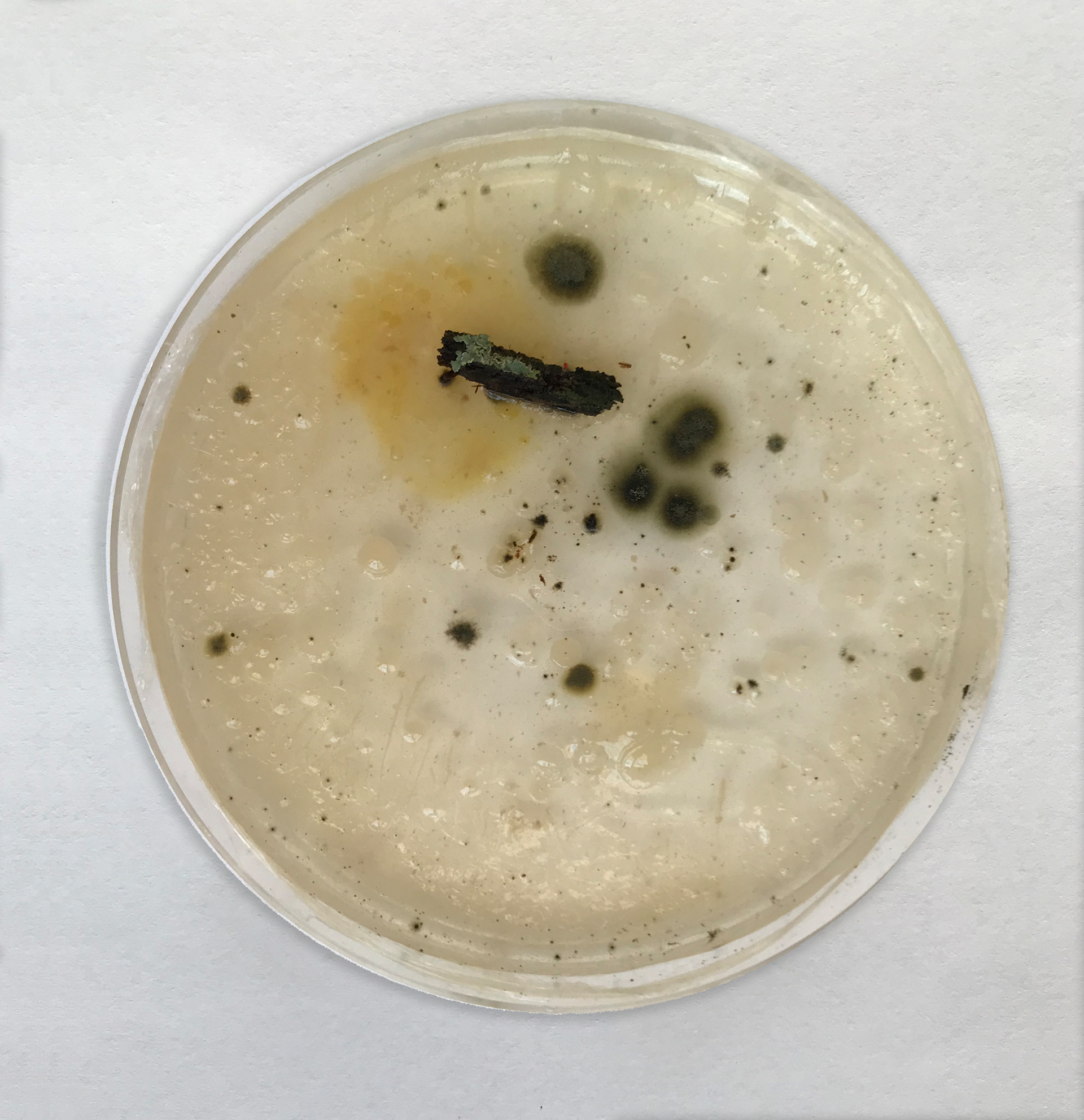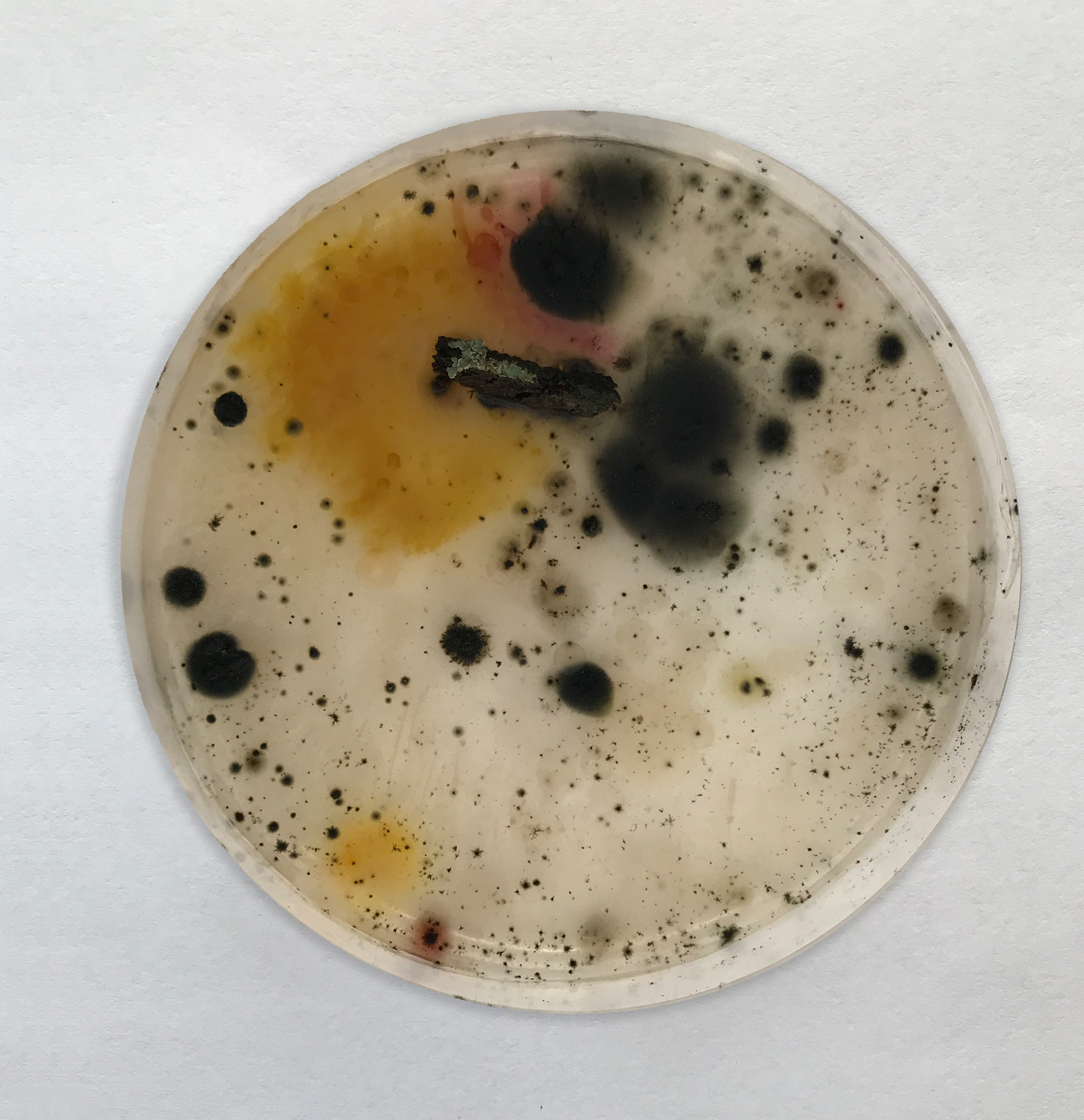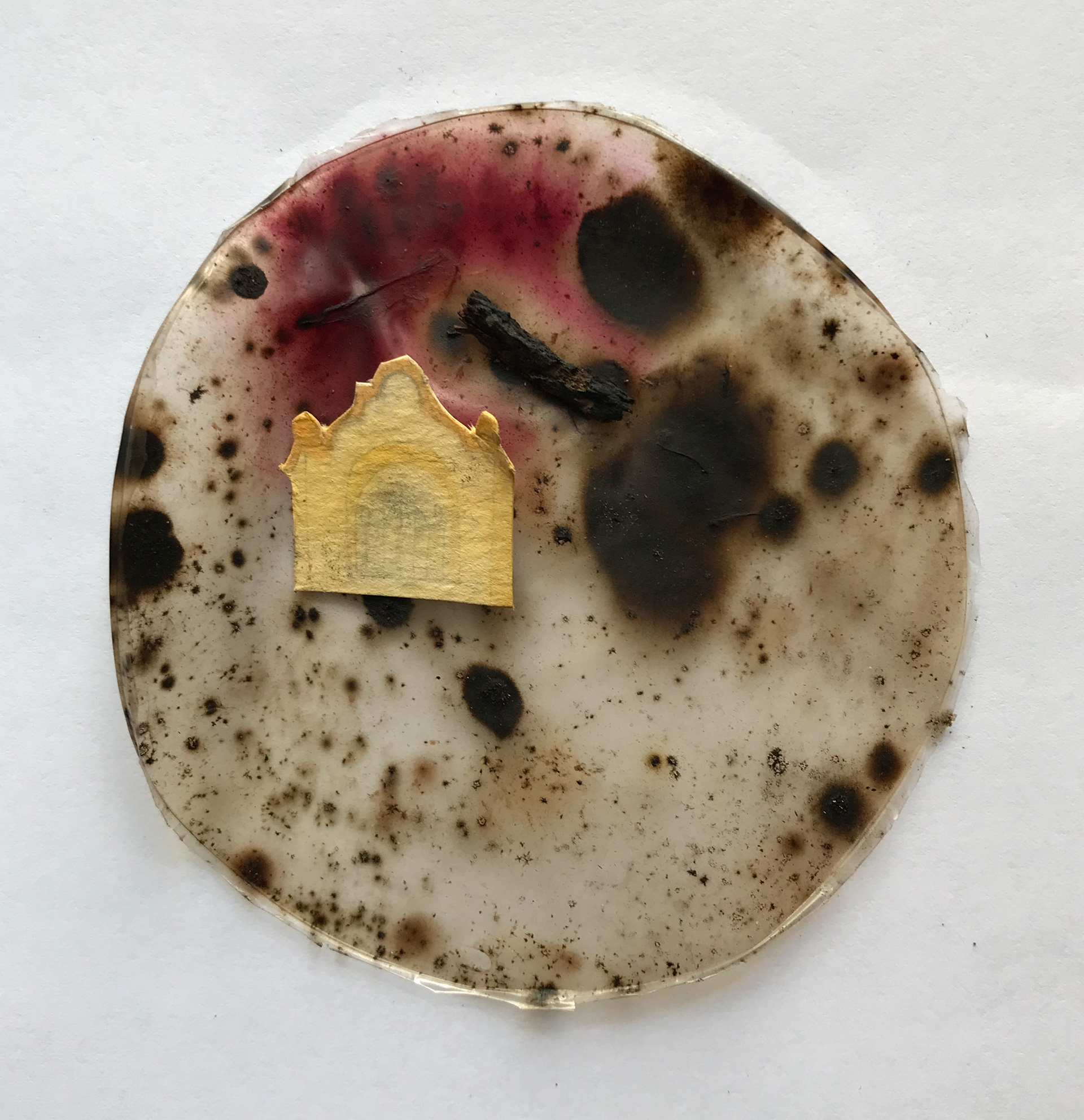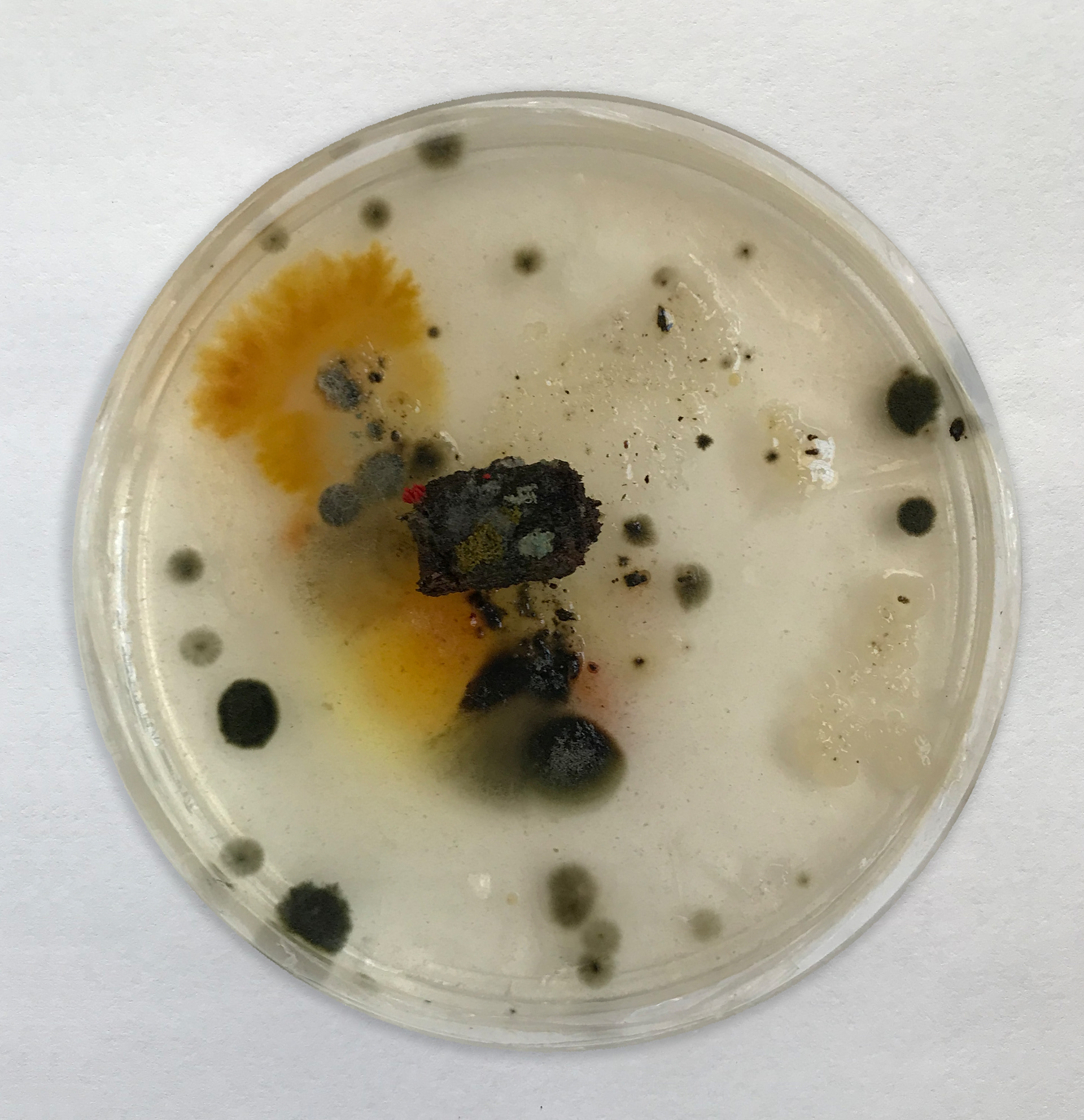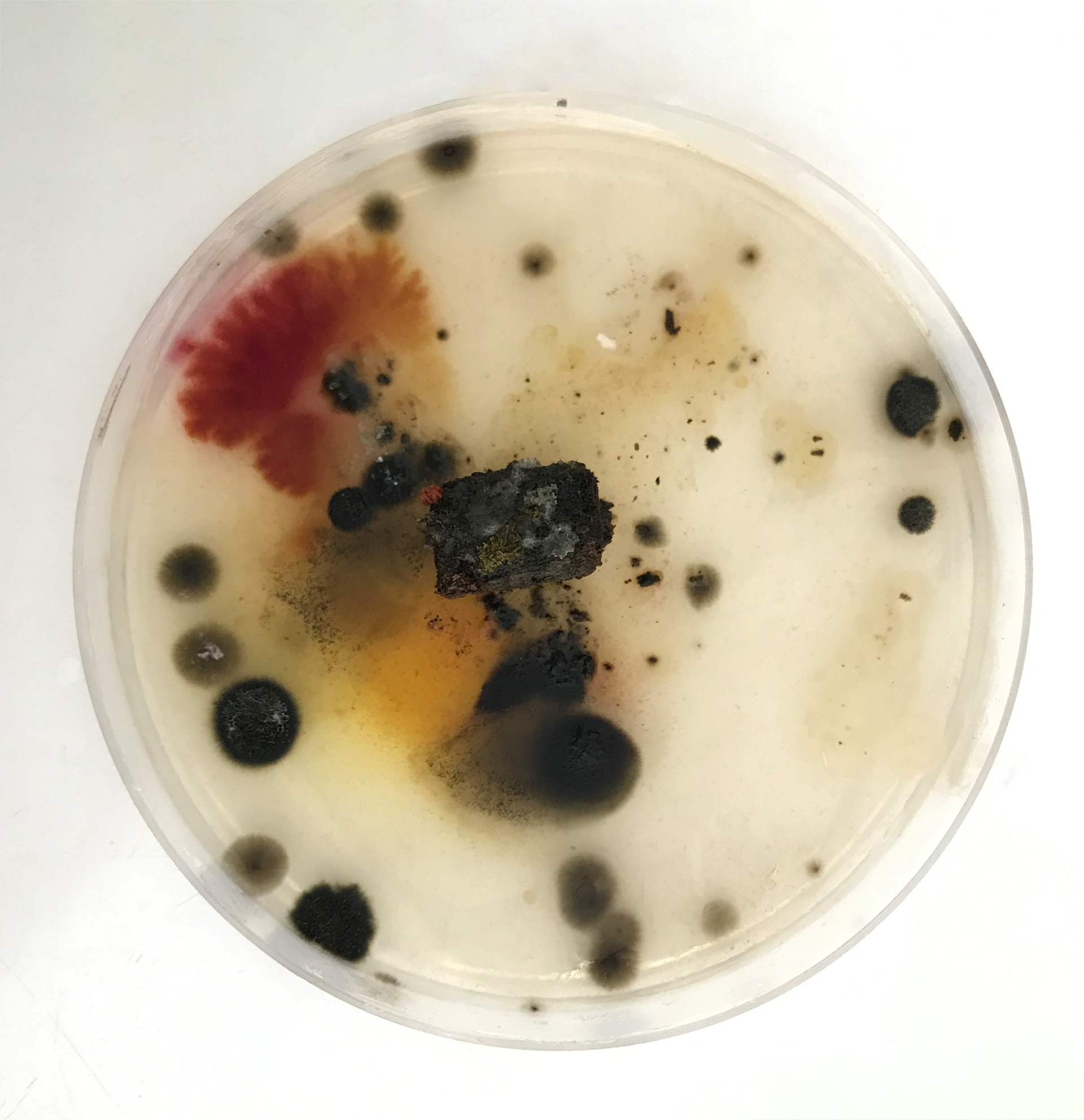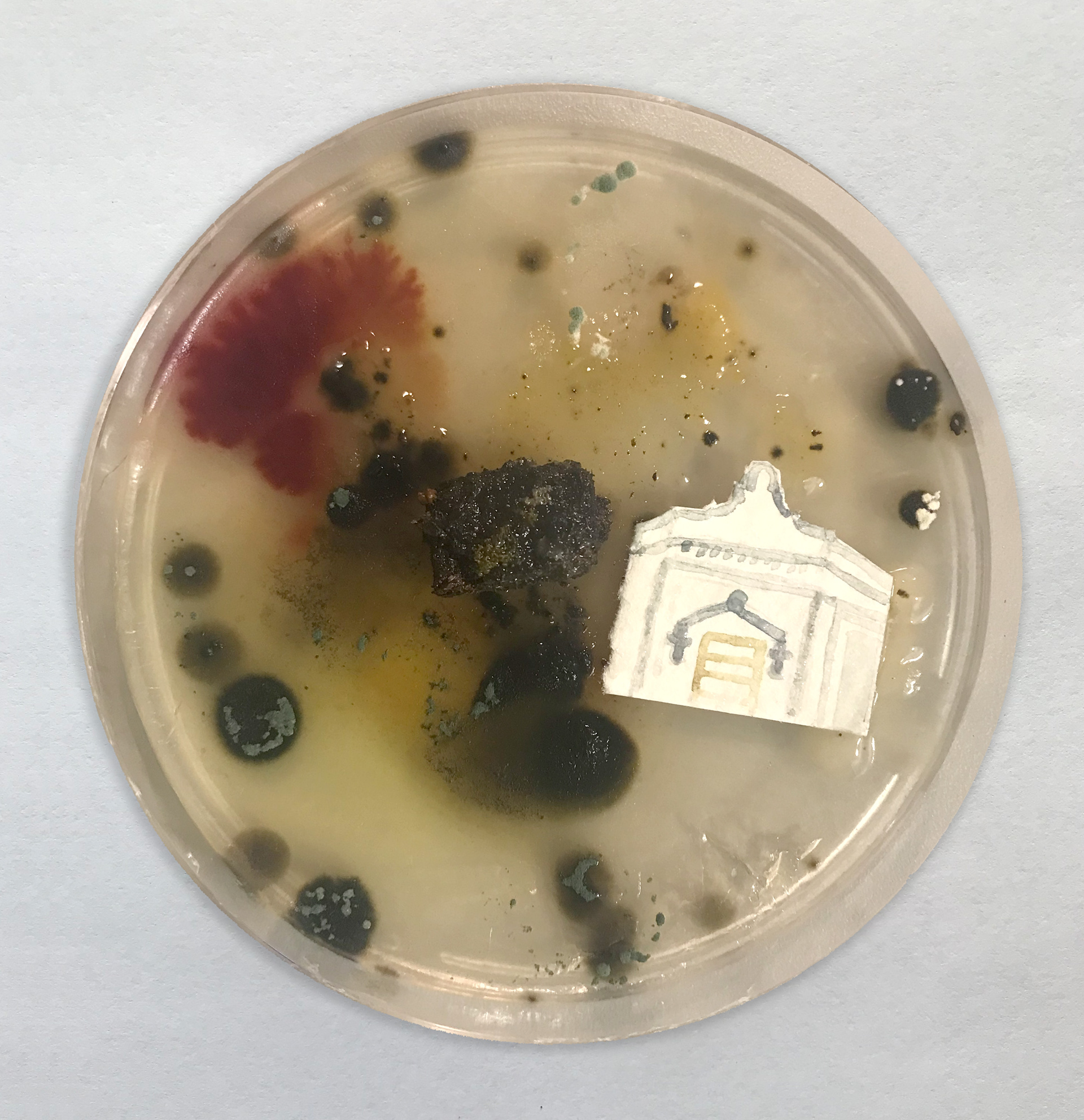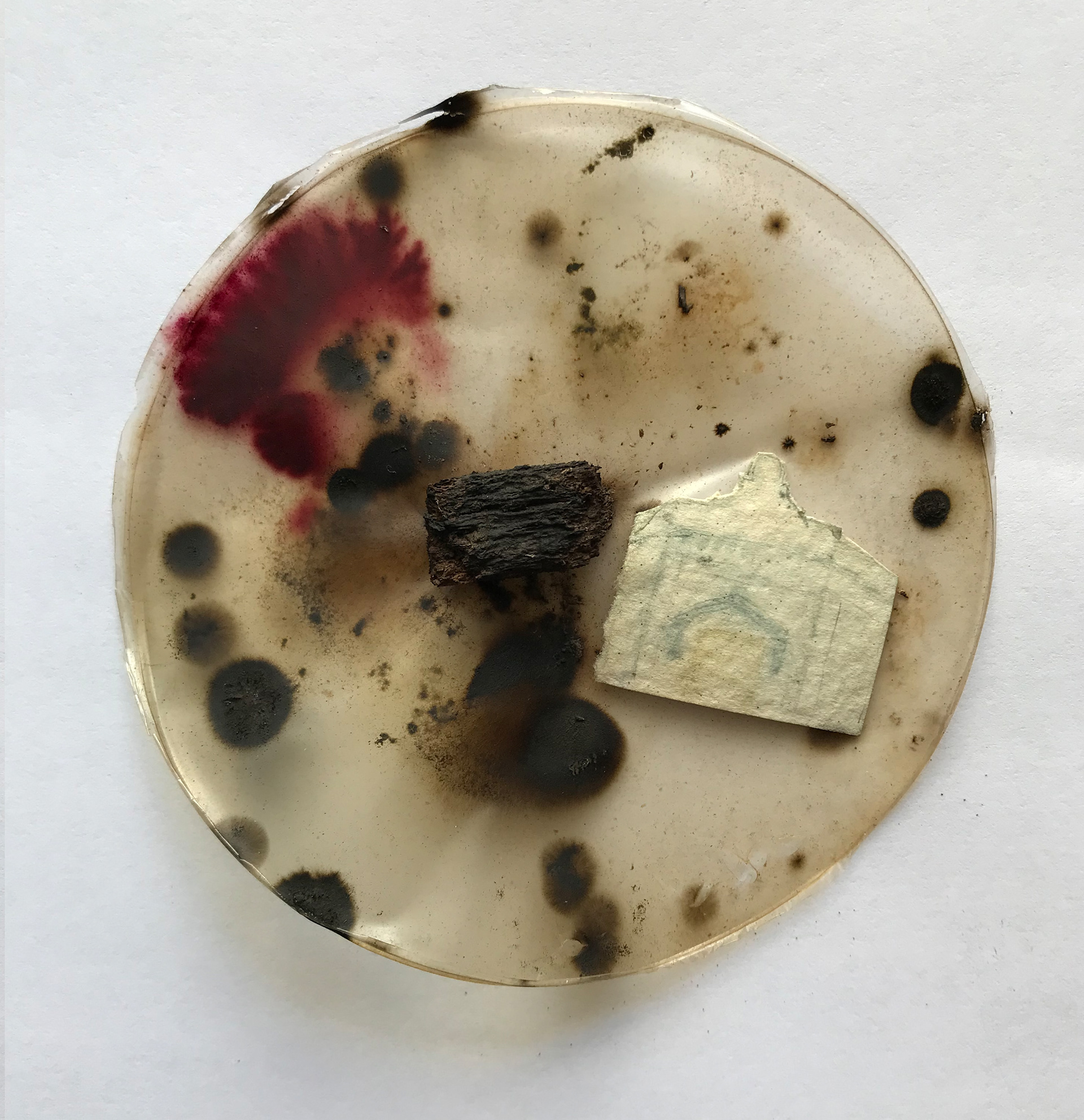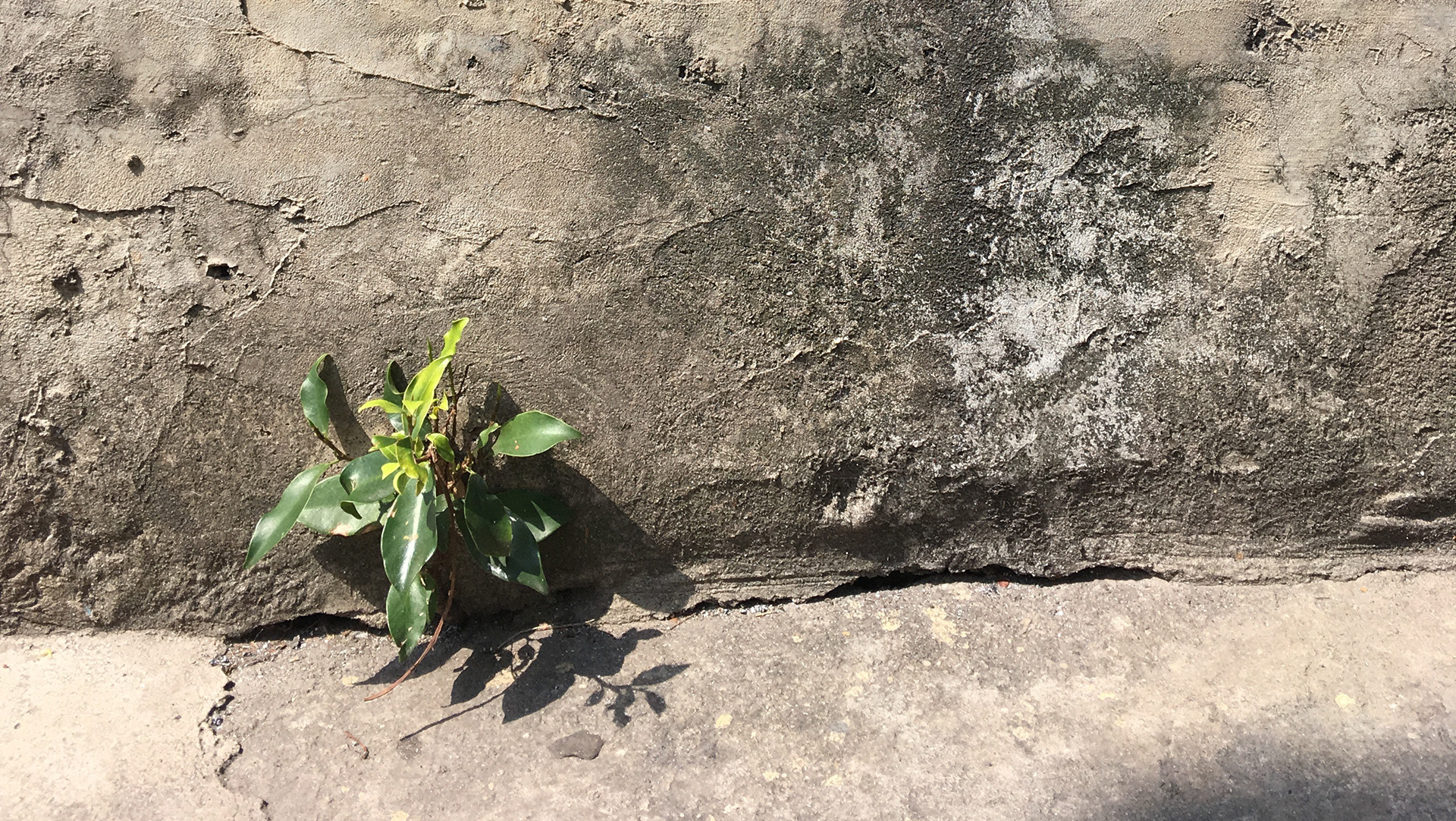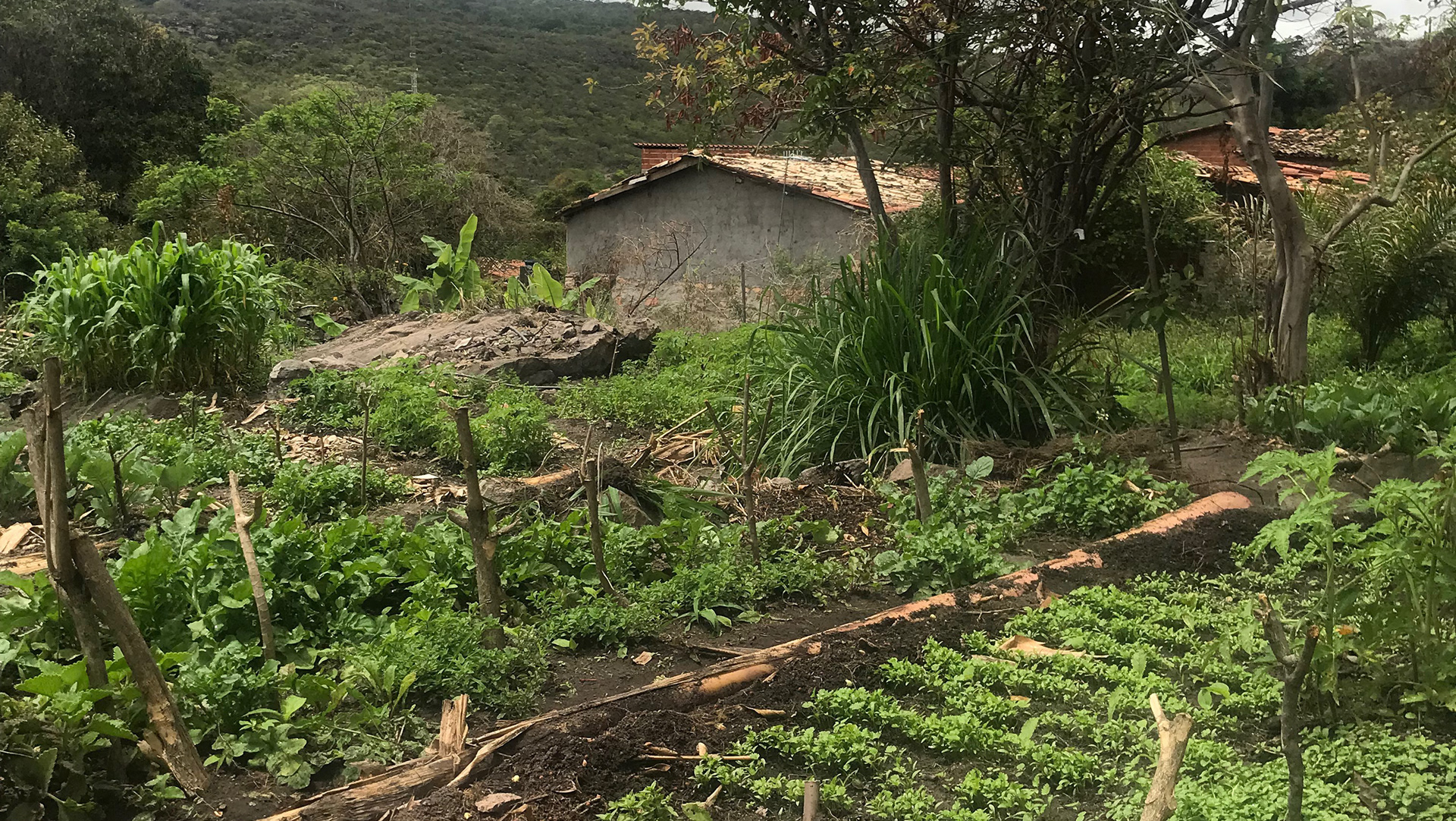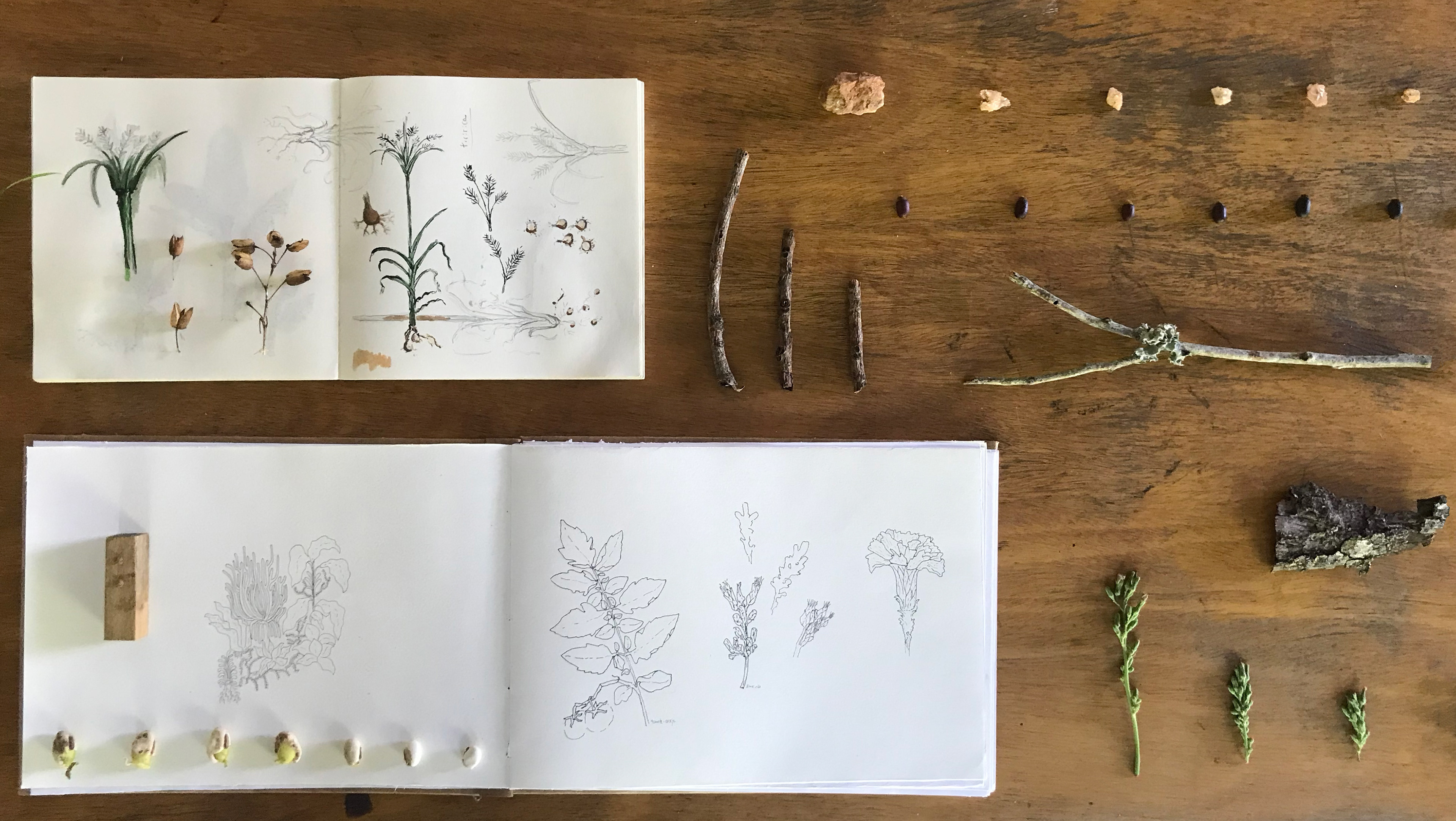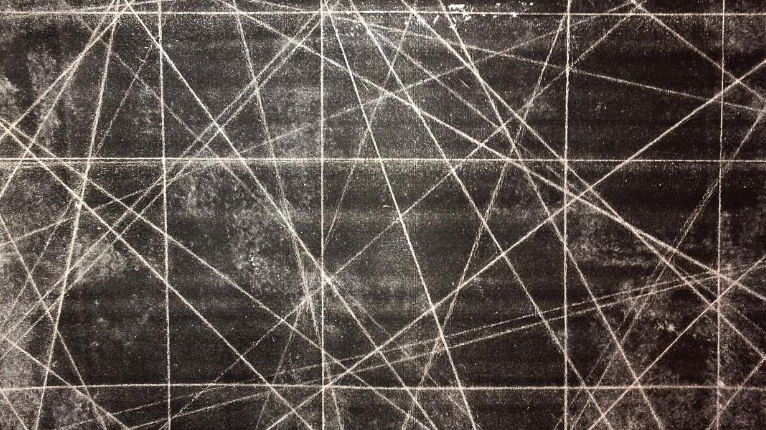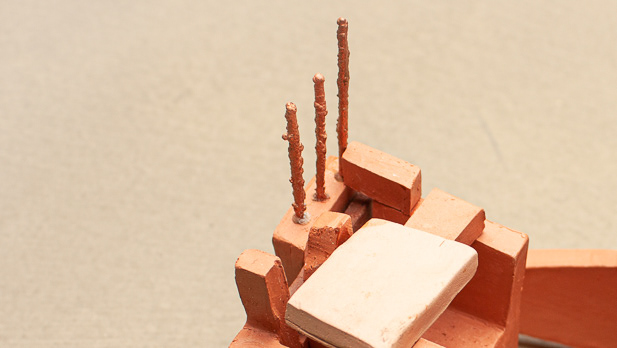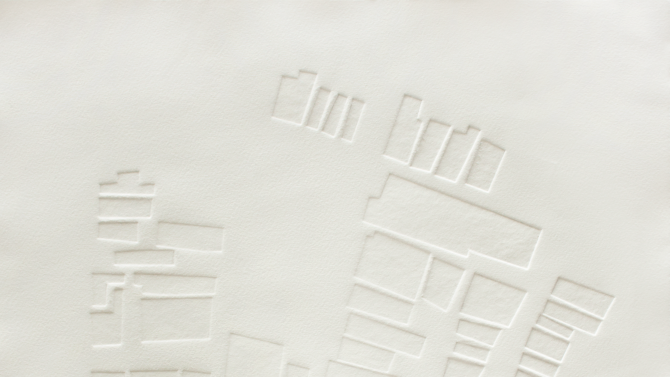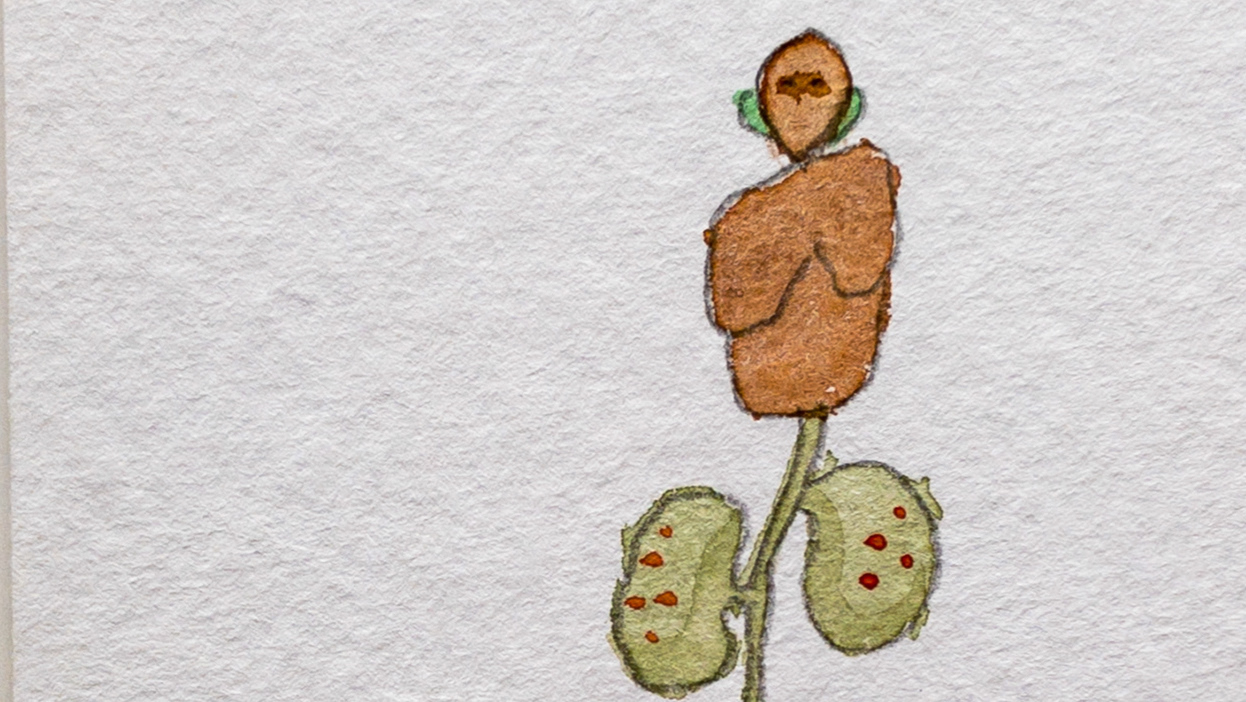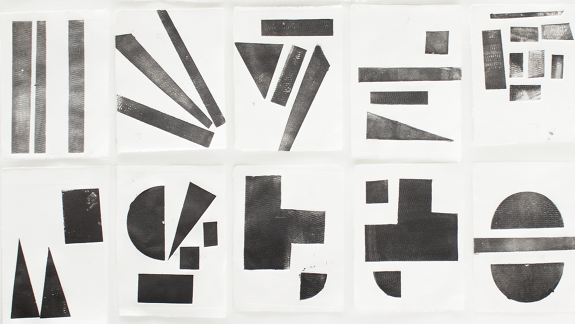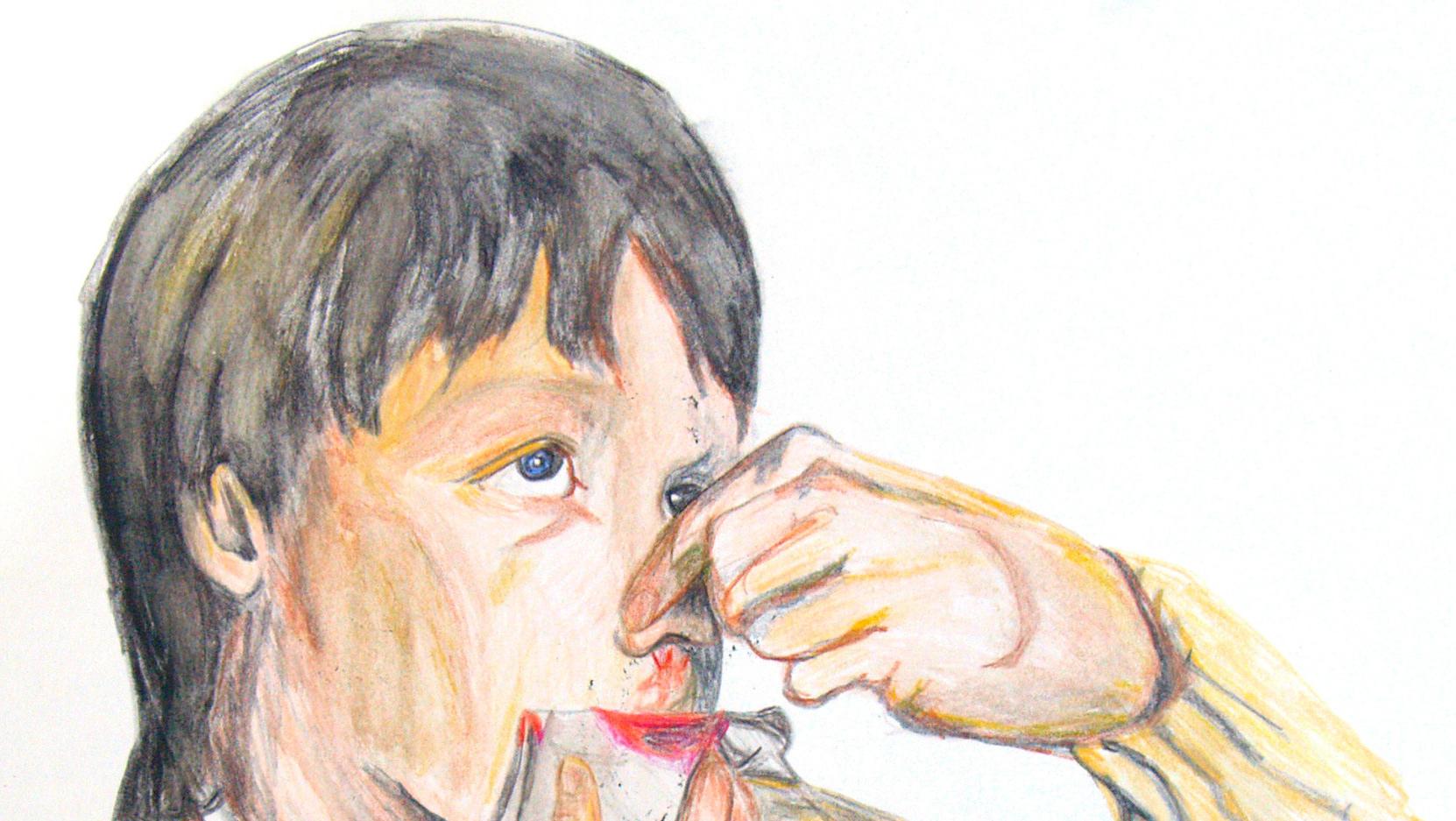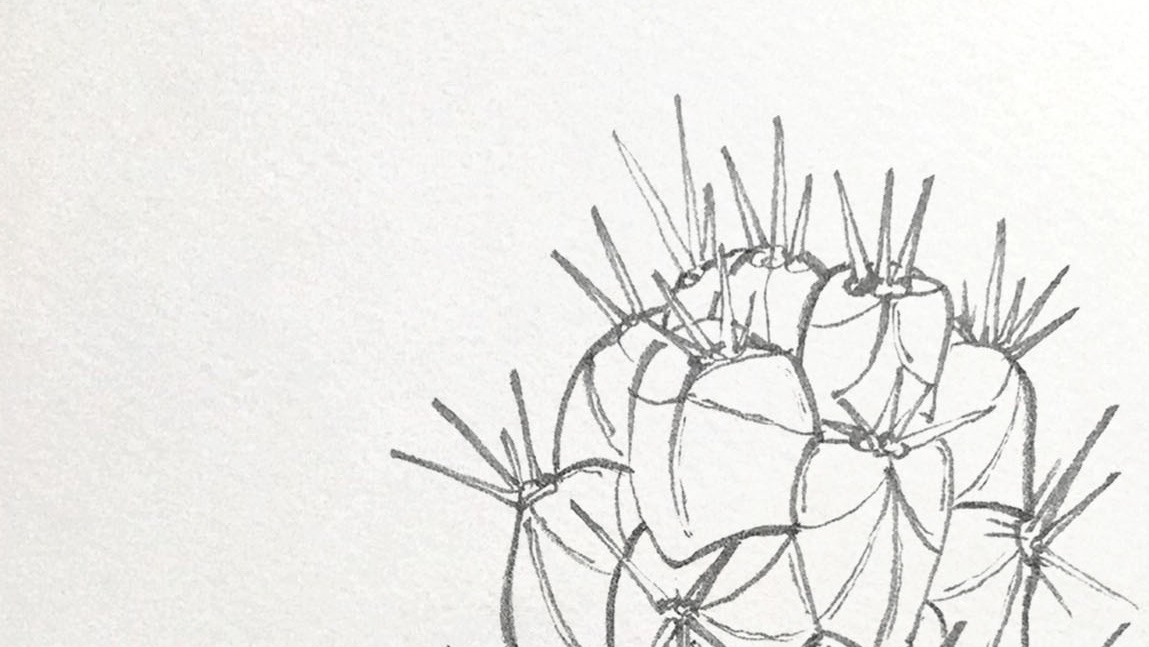Este trabalho de arte propõe a coleta de esporos fúngicos e amostras de líquens em vários territórios abandonados e cidades-fantasma. Os esporos são isolados e cultivados em placas de Petri, dando origem a novas colônias de micélio que, posteriormente, colonizam papéis, formando um registro do crescimento colaborativo entre a artista e os reinos microbianos. Espécies diversas – incluindo fungos – coexistem e se entrelaçam em ecossistemas perturbados pela ação humana. Nesta obra, a coleta em territórios abandonados alude ao conceito de emaranhamento de diferentes tipos de vida em diferentes tempos: ao cultivar organismos coletados em espaços abandonados por populações humanas, traz-se para o visível os vestígios de uma vida que persiste nesses locais, evocando os fantasmas dessas paisagens e rastros de múltiplos passados.
Os fungos revelam temporalidades diferentes das nossas. Seu potencial de longevidade reside na capacidade de seus esporos de permanecerem dormentes por longos períodos e de seu micélio clonal se expandir de forma contínua sob condições ideais. Nas restrições de uma placa de Petri ou de um papel, no entanto, cada colônia individual tem um ciclo de vida finito. Esses cultivos fúngicos mostram-nos temporalidades múltiplas, nas quais vidas invisíveis, em constante ciclo de crescimento, dormência e morte, coexistem com paisagens já esquecidas pelos humanos. Ao prestar atenção no tempo dos fungos, em vez de lhes impor o nosso, abrimo-nos para a possibilidade de um tipo diferente de habitabilidade, onde paisagens humanas são efêmeras em comparação com a resiliência reprodutiva das espécies. Essa obra é, portanto, uma cartografia dos intervalos e margens do tempo, onde o presente é apenas uma camada em meio a tantas outras que habitaram e persistem no que chamamos de ruínas.
This artwork proposes the collection of fungal spores and lichen samples from various abandoned territories and ghost towns. The spores are isolated and cultivated in Petri dishes, giving rise to new mycelial colonies that are subsequently transferred onto paper, forming a record of the collaborative growth between the artist and microbial kingdoms. Diverse species – including fungi – coexist and intertwine within ecosystems disturbed by human action. In this work, collecting in abandoned territories alludes to the concept of the entanglement of different forms of life across different times: by cultivating organisms collected from spaces abandoned by human populations, the vestiges of a life that persists in these places are made visible, evoking the ghosts of these landscapes and traces of multiple pasts.
Fungi reveal temporalities different from our own. Their potential for longevity lies in the ability of their spores to remain dormant for long periods and for their clonal mycelium to expand continuously under ideal conditions. Within the constraints of a Petri dish or a sheet of paper, however, each individual colony has a finite life cycle. These fungal cultures show us multiple temporalities, in which invisible lives, in a constant cycle of growth, dormancy, and death, coexist with landscapes already forgotten by humans. By paying attention to the time of fungi, instead of imposing our own upon them, we open ourselves to the possibility of a different kind of habitability, where human landscapes are ephemeral compared to the reproductive resilience of species. This work is, therefore, a cartography of the intervals and margins of time, where the present is merely one layer amongst so many others that have inhabited and persist in what we call ruins.


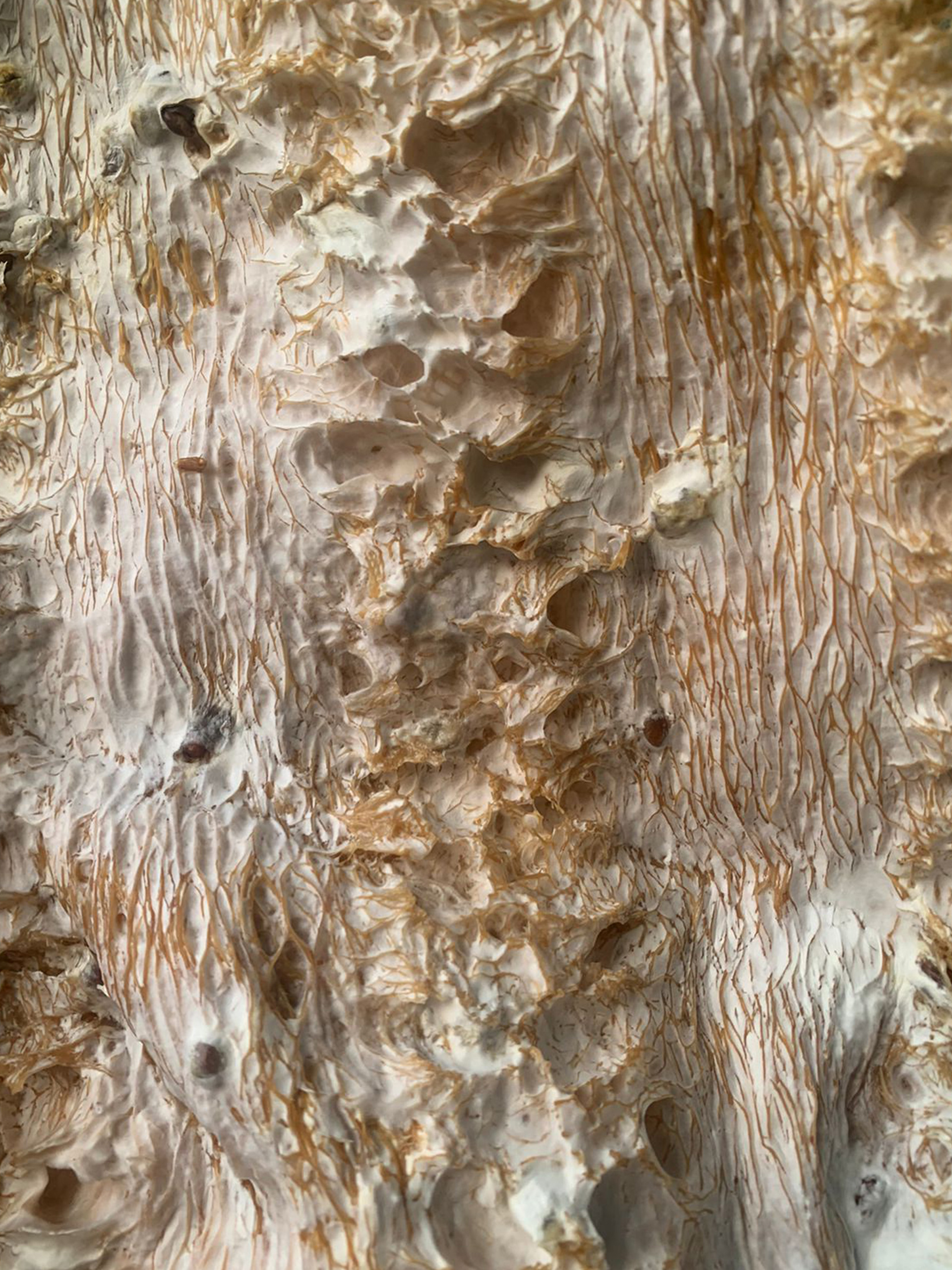
Estudos sobre desenvolvimento de micélios e biomateriais, com Adriana Fukunari, 2024.
Serra da Capivara, Piauí, Brasil, 2024.


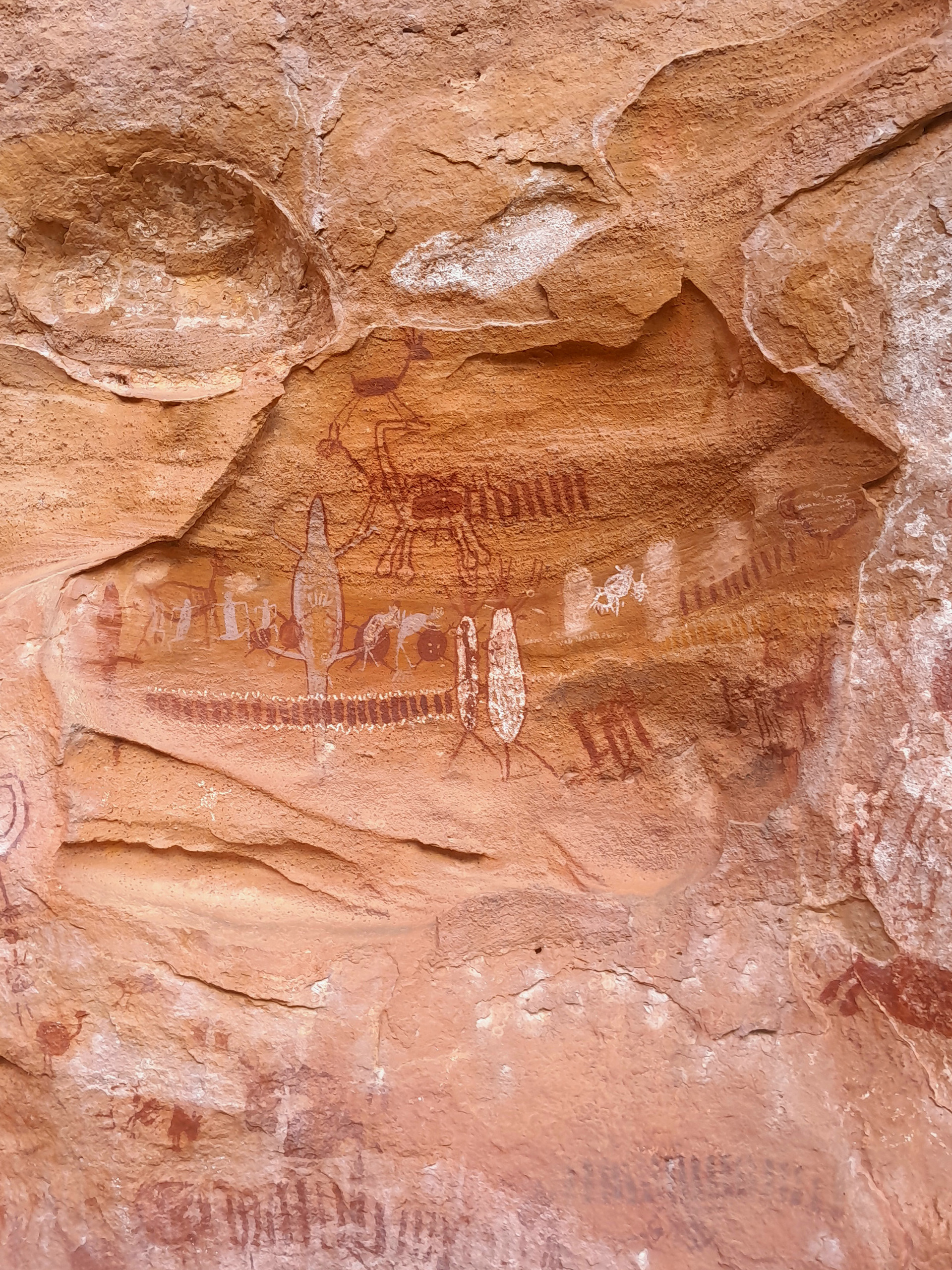
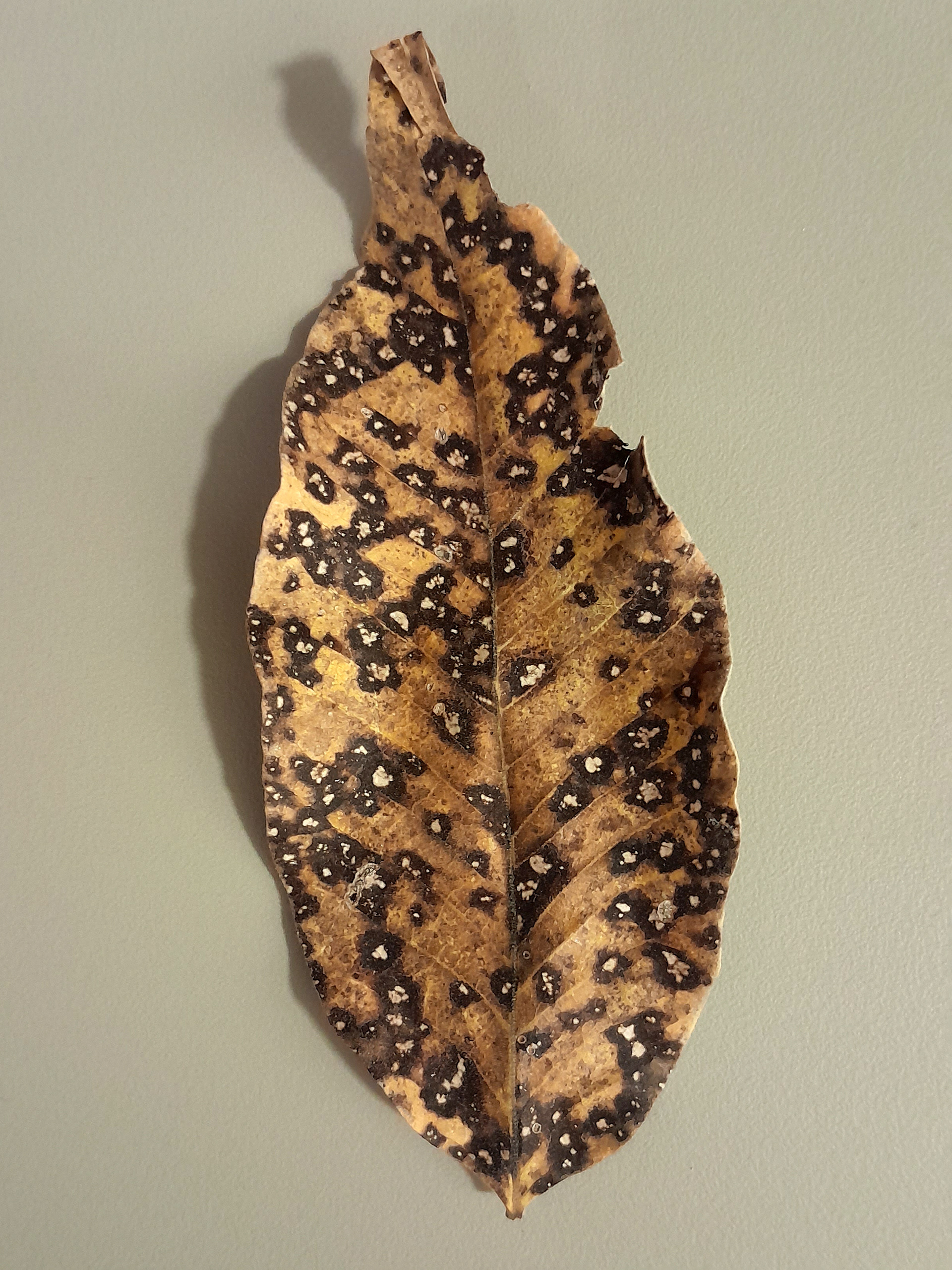
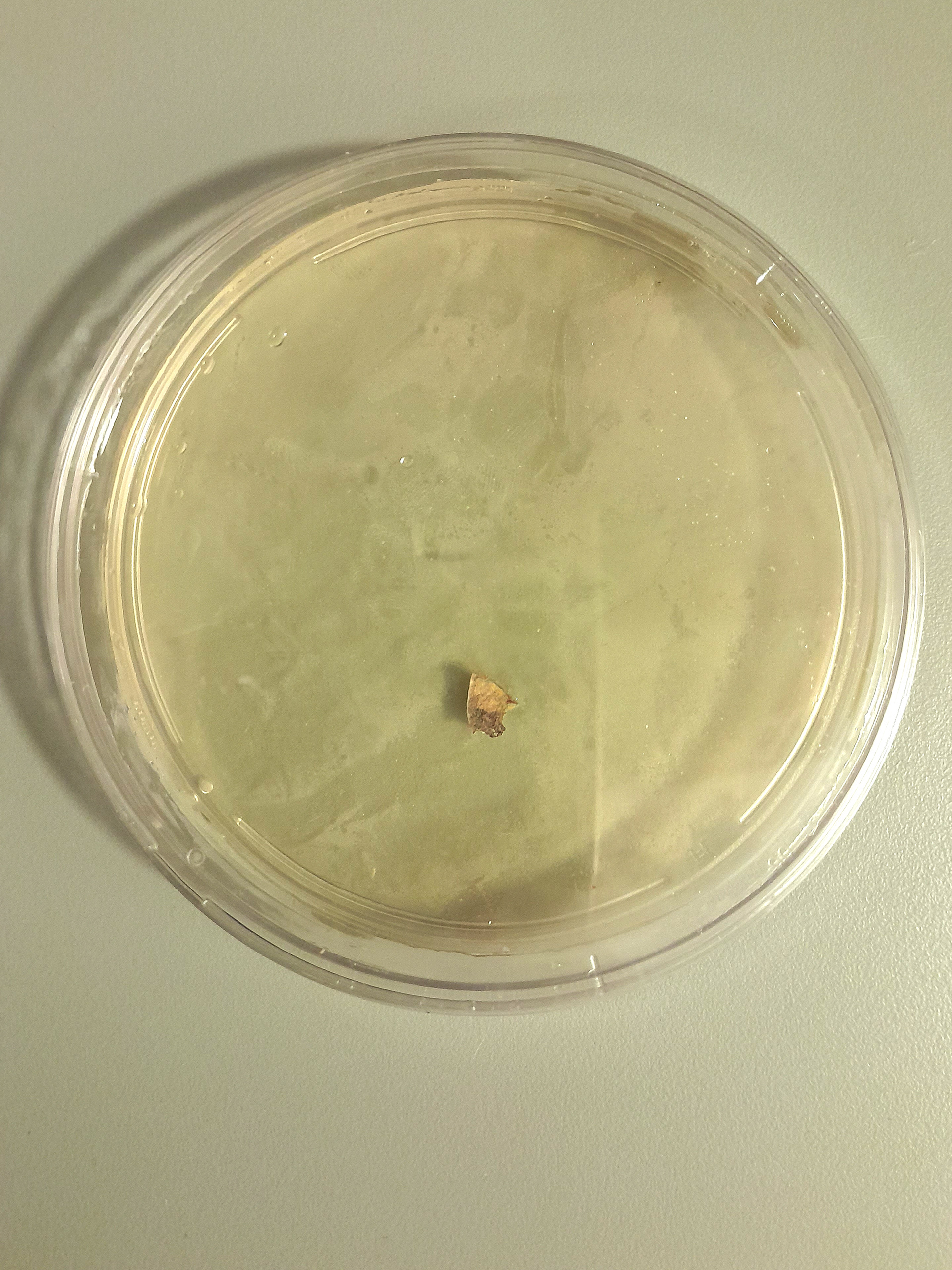

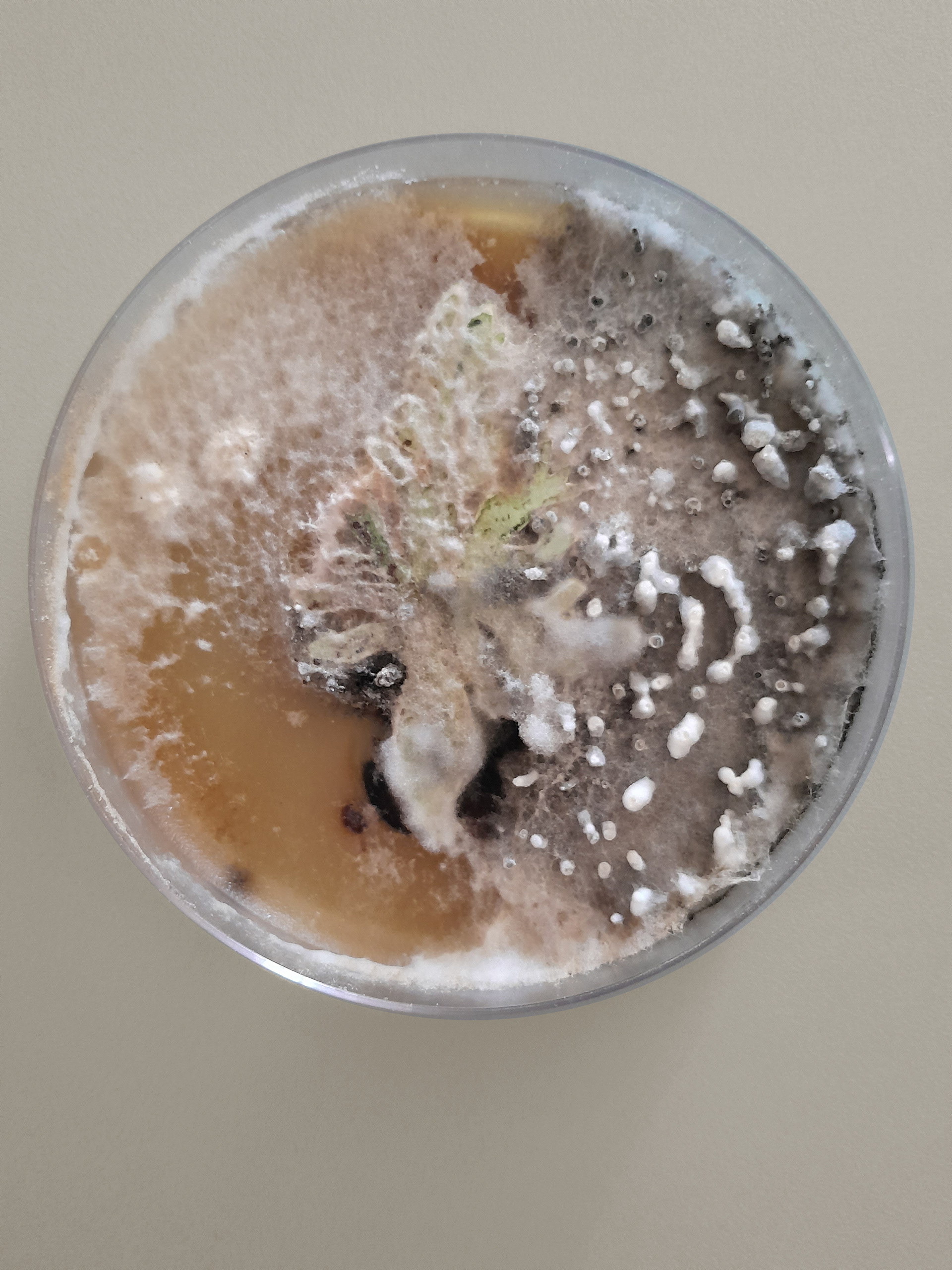

A partir de uma folha colhida na Serra da Capivara,
coletei um fungo presente na folha
e o deixei crescer sob um pequeno desenho.
coletei um fungo presente na folha
e o deixei crescer sob um pequeno desenho.
From a leaf collected in Serra da Capivara, I collected a fungus present on the leaf and let it grow under a small drawing.
Fungos e microorganismos sobre aquarela em meio de cultura, depois de 1 ano e meio da coleta e contaminação da placa.
Residência Epecuén
Em novembro de 2024, participei da Residência Epecuén, entre Carhué e a vila de Epecuén, nas Pampas argentinas. A vila, outrora um balneário turístico, sofreu uma inundação massiva em 1985, causada por agência humana, que causou a destruição completa do local e a deixou submersa nas águas do lago Epecuén por 20 anos. O lago tem uma salinidade altíssima, e tudo foi consumido pela água e pelo sal, exceto os líquens – associações simbióticas entre fungos e algas que resistem a ambientes extremos.
Por duas semanas, coletei amostras desses líquens, cujos fungos, em simbiose, evoluíram para tolerar a salinidade. O processo artístico consistiu em fixar esses organismos em aquarelas de edifícios emblemáticos de Carhué, cidade que acolheu os deslocados de Epecuén. Esta fixação preserva a forma e a matéria dos líquens, criando um registro permanente de sua existência. Assim como os líquens, a relação entre os territórios é feita de interdependência: Carhué carrega nas ruínas de sua arquitetura as memórias de uma tragédia que redefiniu identidades. As impressões dos líquens nas aquarelas não são contaminação, mas registros colaborativos – um diálogo entre espécies que, como propõe Donna Haraway, nos convida a 'habitar o problema' de mundos em colapso. Os fungos, aqui, não são invasores, mas co-signatários de uma cartografia da resiliência.
Epecuén Residency
In November 2024, I participated in the Epecuén Residency, located between Carhué and the village of Epecuén in the Argentine Pampas. The village, once a tourist resort, suffered a massive flood in 1985 caused by human agency, which led to the complete destruction of the site and left it submerged under the waters of Lake Epecuén for 20 years. The lake has extremely high salinity, and everything was consumed by the water and salt—except for the lichens: symbiotic associations between fungi and algae that withstand extreme environments.
For two weeks, I collected samples of these lichens, whose fungi, in symbiosis, have evolved to tolerate salinity. The artistic process involved fixing these organisms onto watercolor paintings of emblematic buildings in Carhué, the city that took in those displaced from Epecuén. This fixation preserves the form and materiality of the lichens, creating a permanent record of their existence. Much like the lichens, the relationship between these territories is one of interdependence: Carhué bears in the ruins of its architecture the memories of a tragedy that redefined identities. The impressions of the lichens on the watercolors are not contamination but collaborative records—a dialogue between species that, as Donna Haraway suggests, invites us to ‘stay with the trouble’ of collapsing worlds. Here, the fungi are not invaders but co-signatories in a cartography of resilience.
Esboço do mapa do lago Epecuén, onde foram colhidos os líquens. / Sketch of the map of Lake Epecuén, where the lichens were collected.
O que é e como se forma um líquen? / What is a lichen and how is it formed?
O mapa e pedaços de objetos de onde foram coletados os líquens.
Trabalho exposto na Casa de Cultura de Carhué, Argentina. /
The map and pieces of objects from where the lichens were collected.
Work exhibited at the Casa de Cultura in Carhué, Argentina.
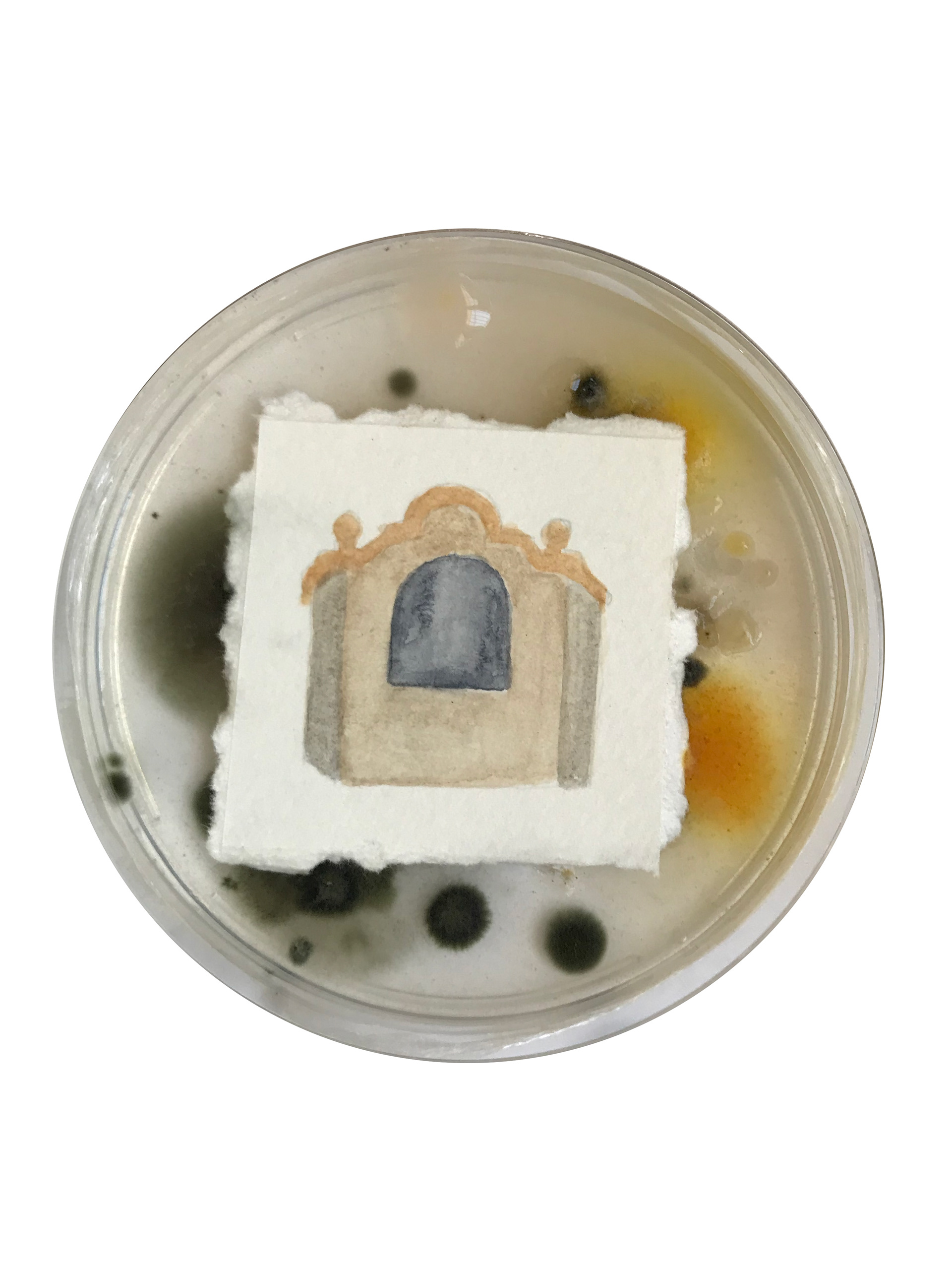
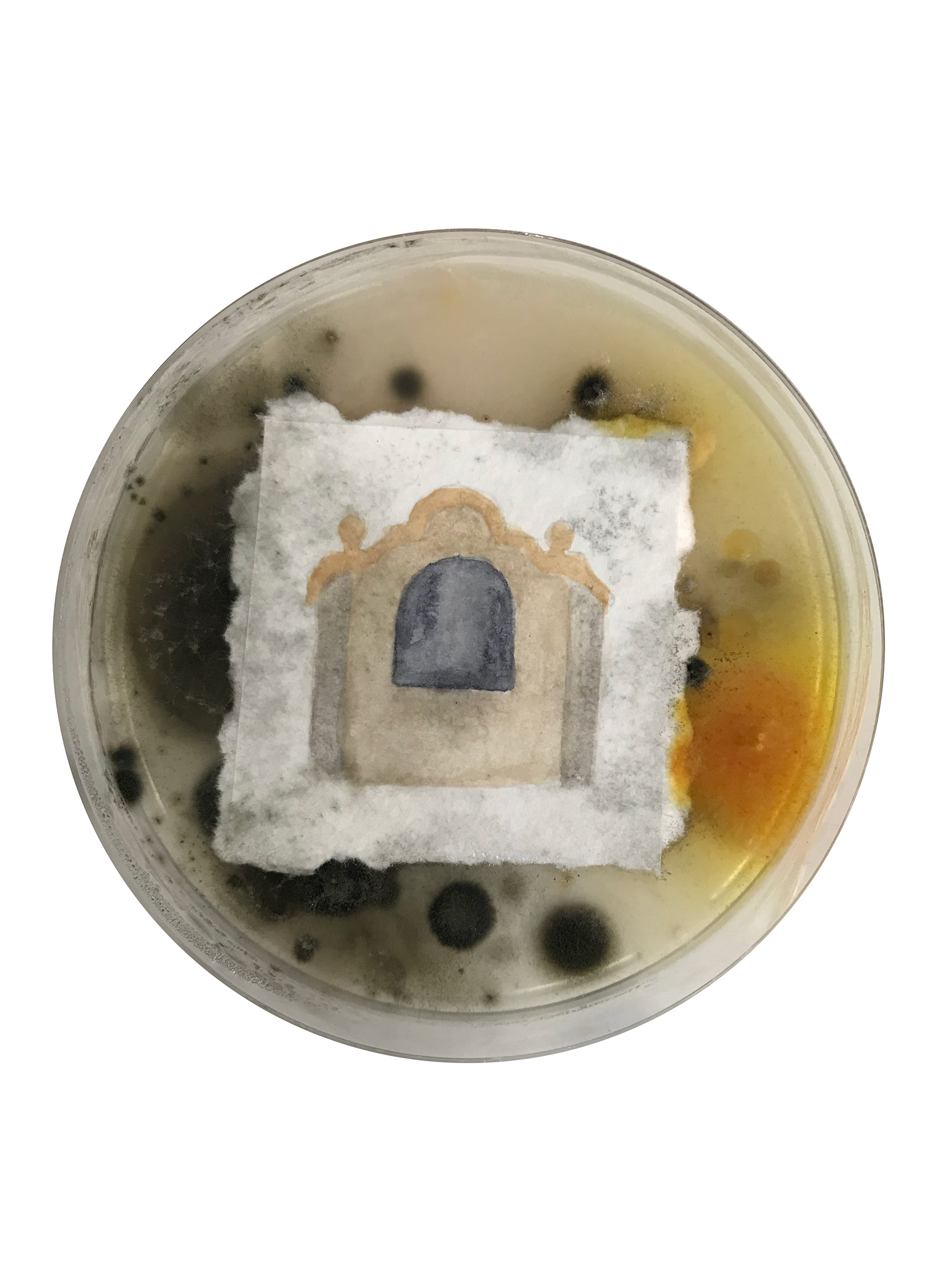
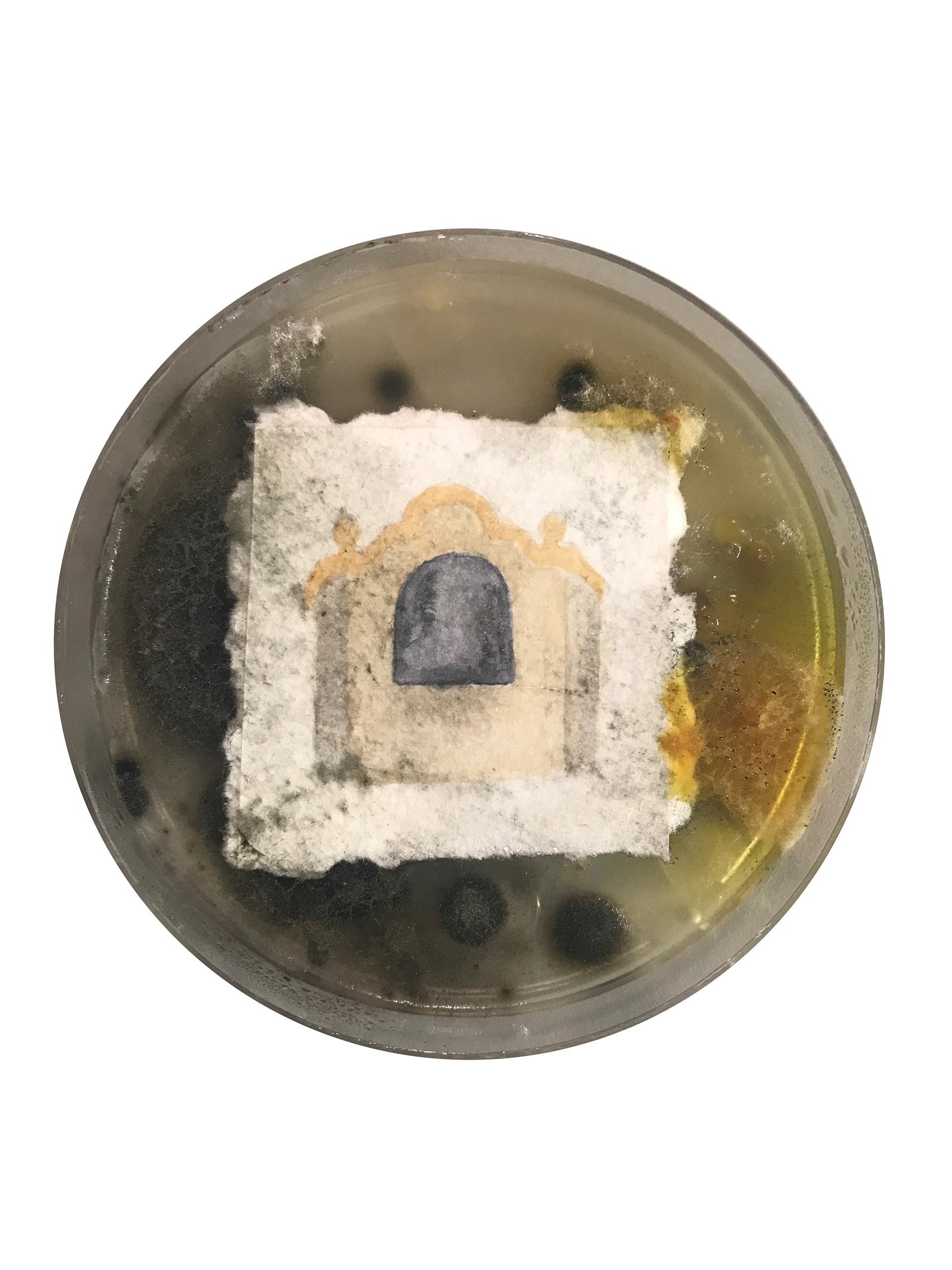
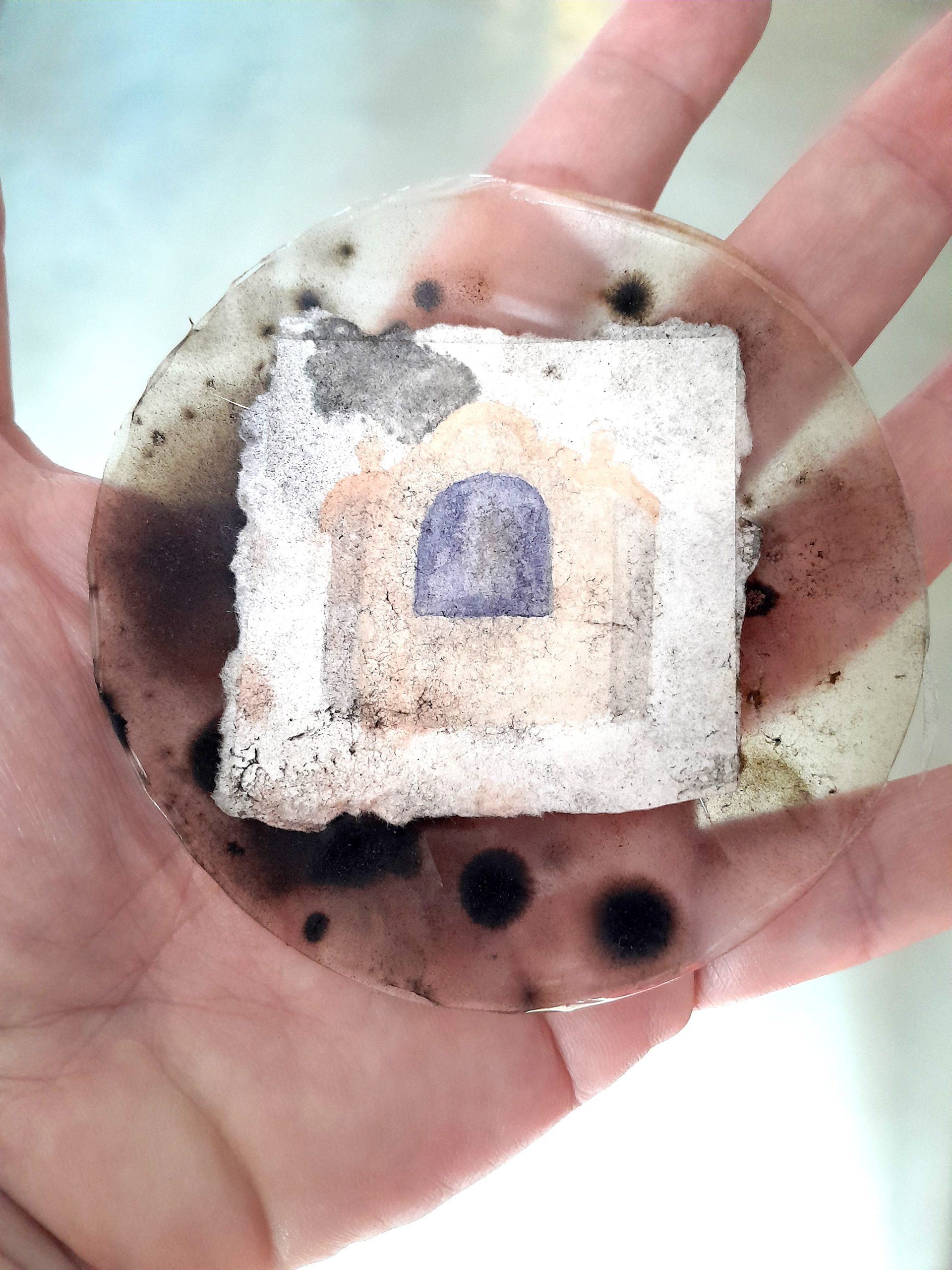
Epecuén e Carhué são territórios entrelaçados por uma relação histórica e social de dependência mútua, análoga, em abstrato, a uma simbiose. A partir da inundação de Epecuén, muitas pessoas foram acolhidas por amigos e familiares em Carhué: a própria identidade da cidade de Carhué ficou profundamente marcada pela tragédia de 1985. Até hoje os moradores mais antigos falam sobre os momentos mais dolorosos da inundação com pesar e respeito pelos que mais sofreram. Tentei, nesse trabalho, desenhar prédios emblemáticos da cidade de Carhué que pudessem ser sobrepostos pelos registros dos líquens encontrados em volta do lago. O resultado é um desenho que evoca uma colaboração simbiótica com os fungos que sobreviveram à inundação, documentando sua resistência como um vestígio material da vida que persistiu.
Epecuén and Carhué are territories intertwined through a historical and social relationship of mutual dependence, analogous in the abstract to symbiosis. Following the flood in Epecuén, many people were welcomed by friends and family in Carhué: the very identity of Carhué became deeply marked by the 1985 tragedy. To this day, longtime residents speak of the most painful moments of the flood with sorrow and respect for those who suffered the most. In this work, I sought to draw emblematic buildings of Carhué that could be overlaid with traces of the lichens collected around the lake. The result is a drawing that evokes a symbiotic collaboration with the fungi that survived the flood, documenting their resistance as a material vestige of the life that persisted.
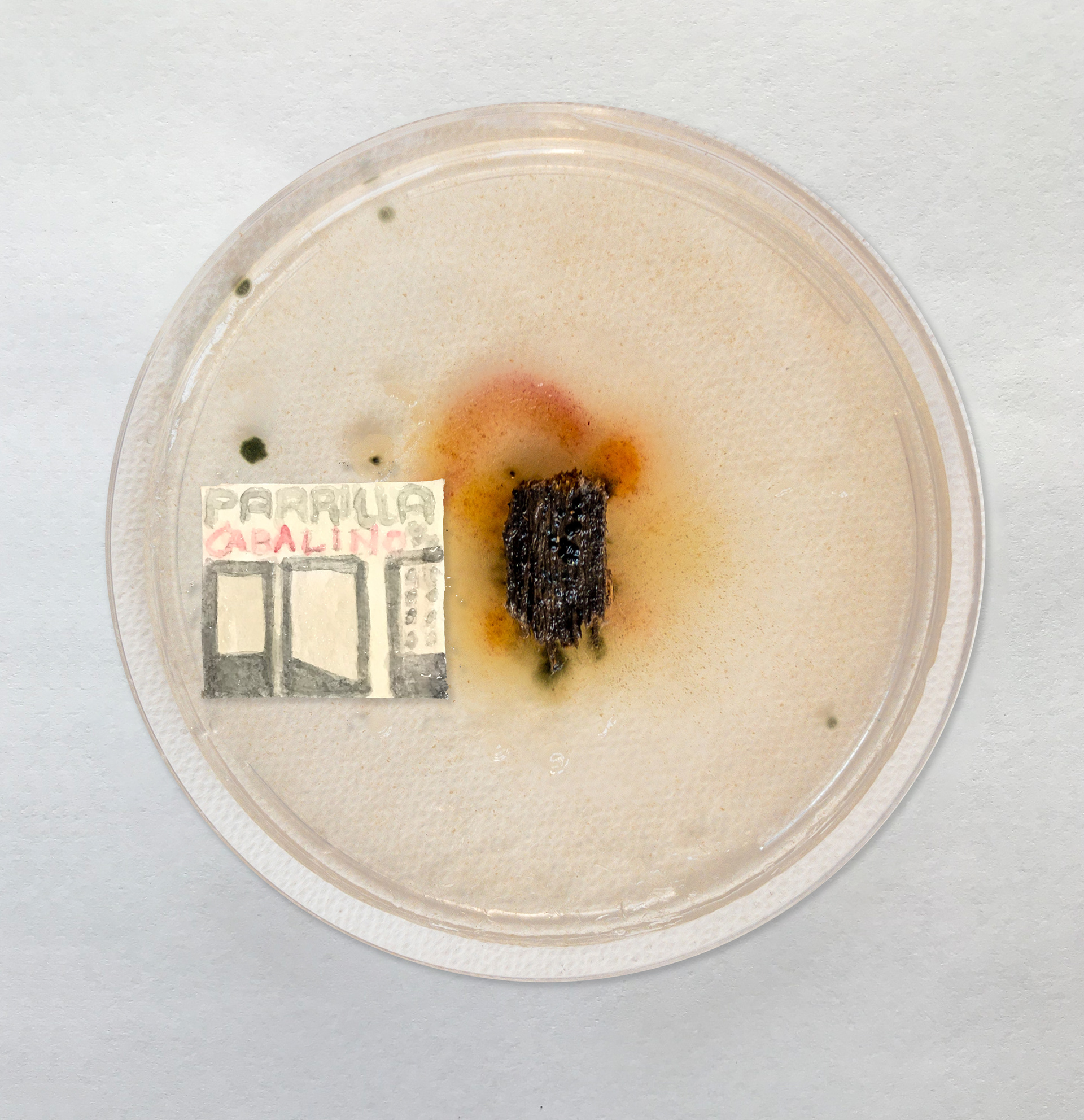

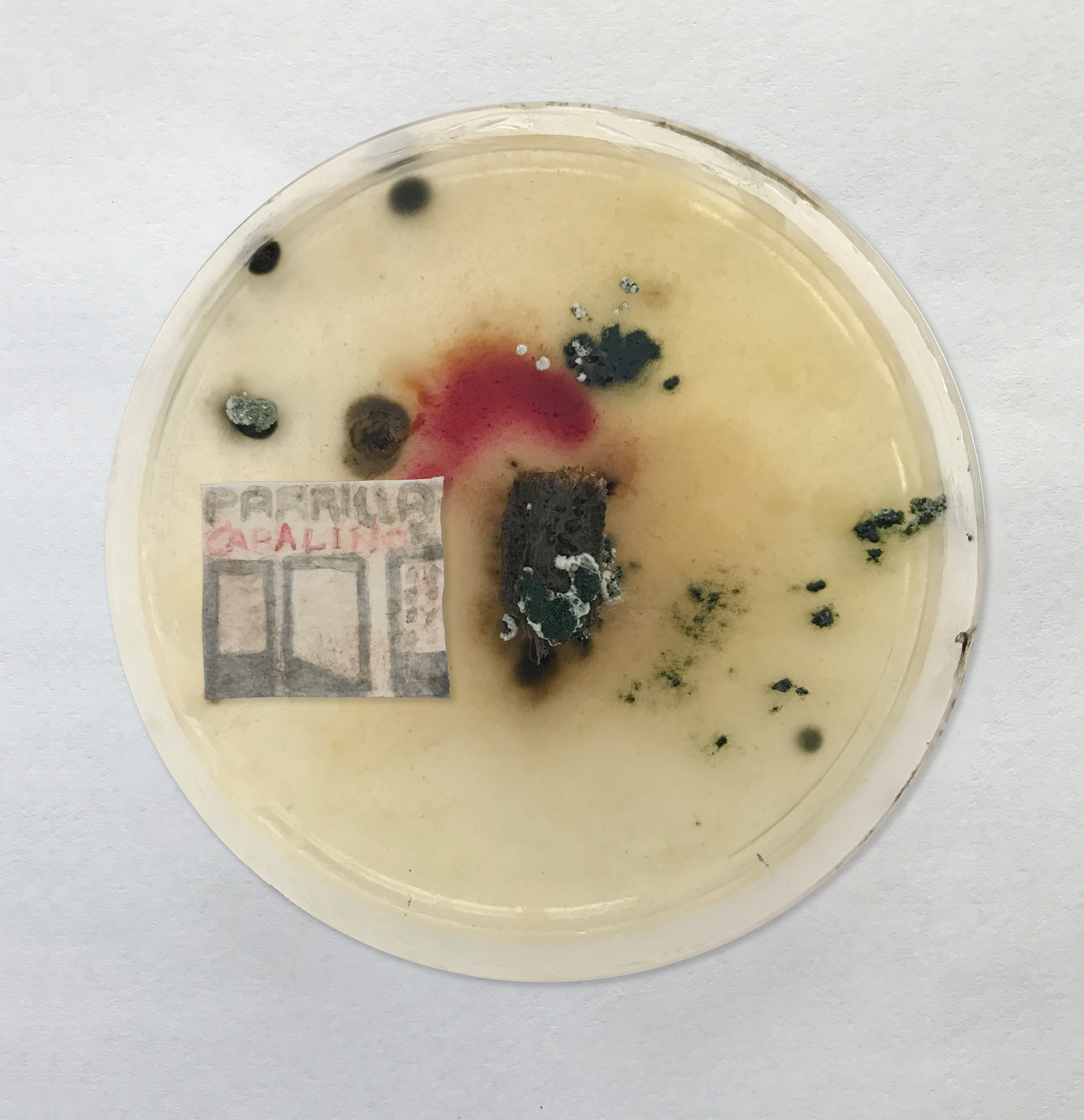

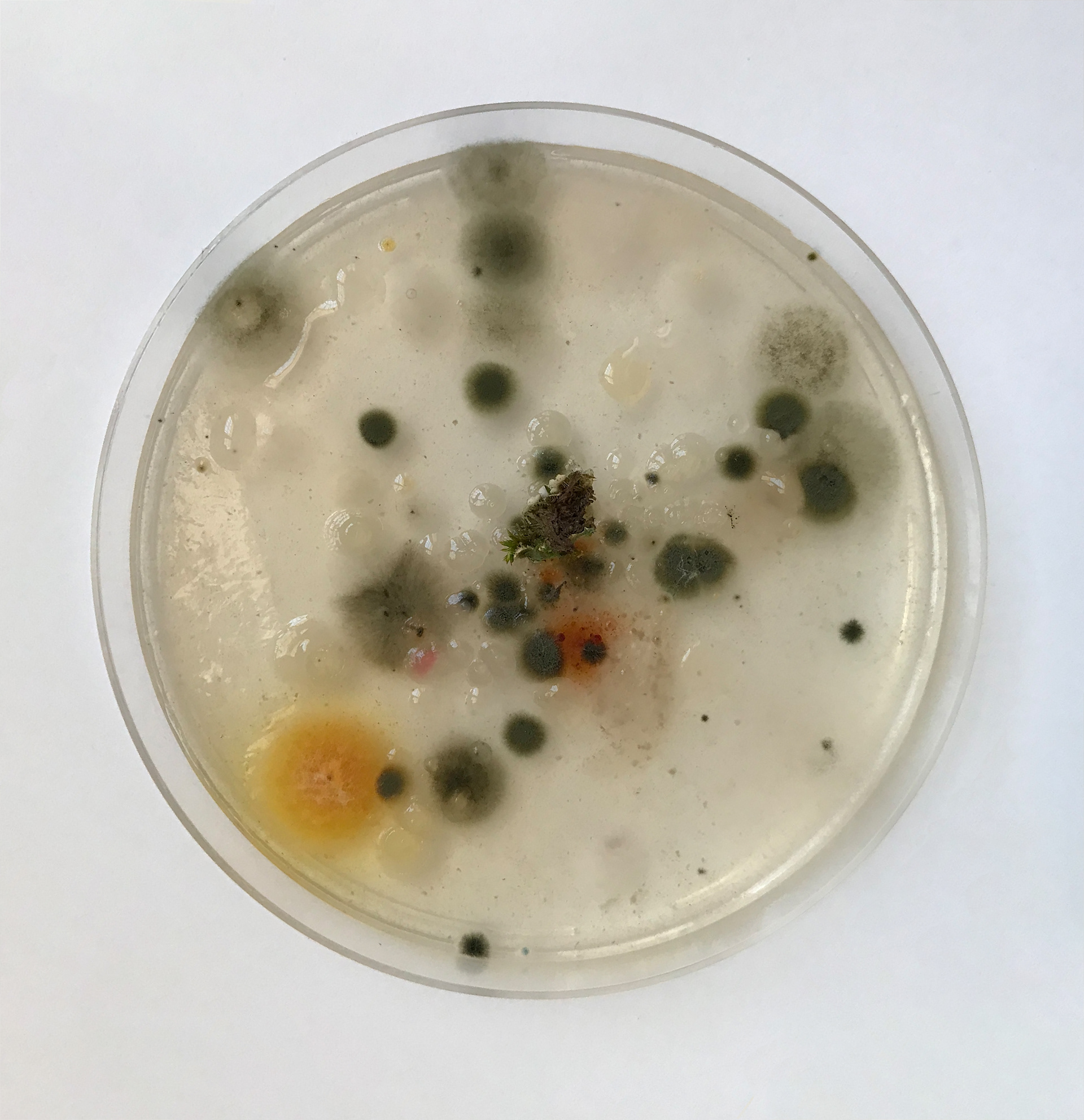




5 meses após contaminação.
12 meses após contaminação.
